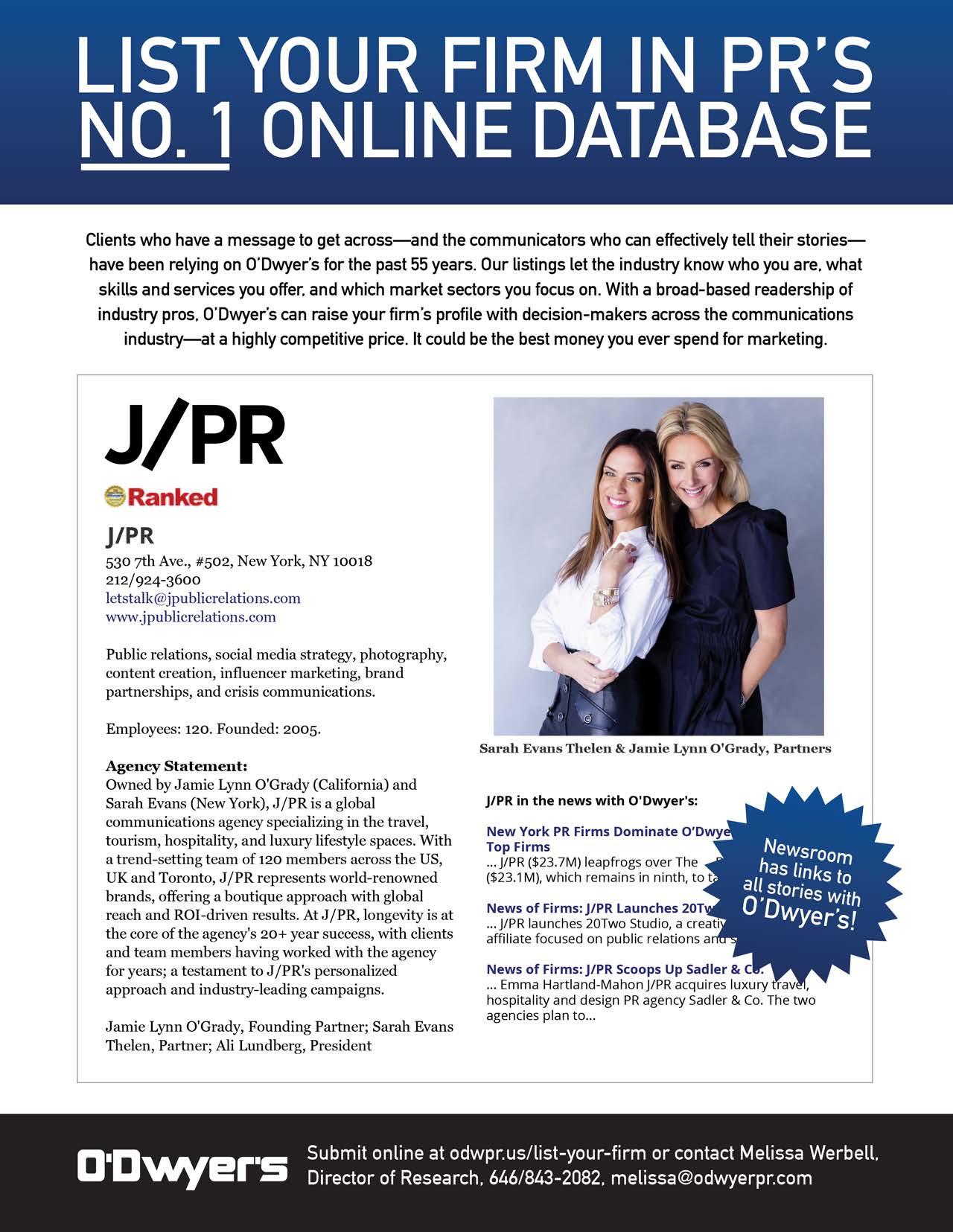
Standingoutinacrowdedtechmedialandscape Whyexecutivevisibilityisnolongeroptional GEOandreputationmanagement SuccessionplanningforPRfirmowners
The30-daypersonalbrandingchallenge


Standingoutinacrowdedtechmedialandscape Whyexecutivevisibilityisnolongeroptional GEOandreputationmanagement SuccessionplanningforPRfirmowners
The30-daypersonalbrandingchallenge
HowGEOhaschangedthePRplaybook Movingbeyondthepressrelease RethinkingvisibilityintheAIera Preppingfortradeshowseason BoostingvisibilityamidAIOverviews
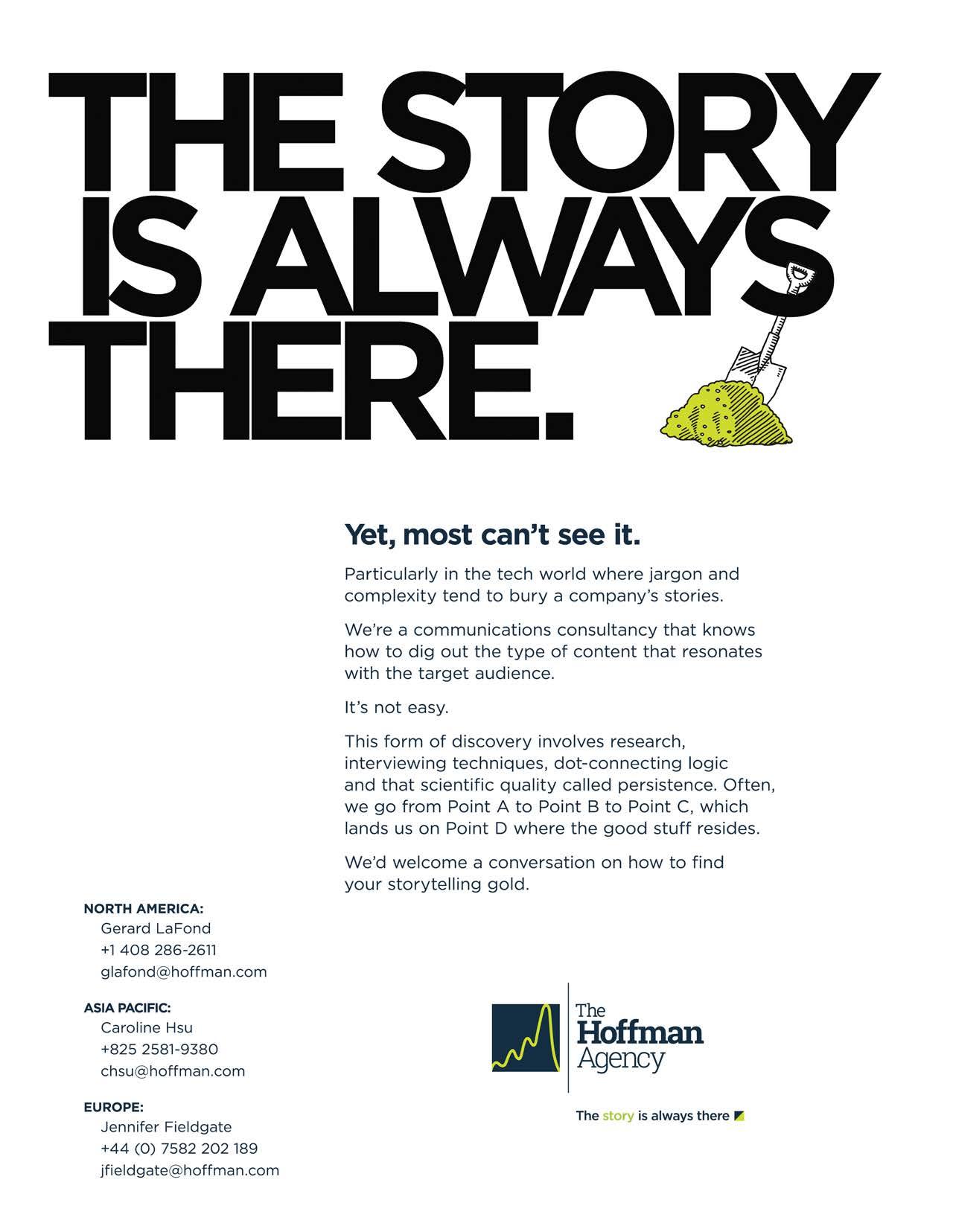

AI PROBABLY WON’T REPLACE YOUR JOB—YET
Work will be transformed by Gen AI, but the likelihood of workers being replaced by AI is small.
Brands are coming up short in earning the trust and loyalty of female audiences.
PR’S ROLE IN AN AI-SHAPED MEDIA LANDSCAPE
What PR can do to boost story visibility with the arrival of Google’s AI Overviews.
THE 30-DAY PERSONAL BRANDING STRATEGY
How to step out from behind the personal branding curtain with a clear message in 30 days. 12
GEO AND REPUTATION MANAGEMENT
Why GEO is quickly becoming a core function of modern reputation management.
PREPPING FOR TRADE SHOW SEASON
For tech brands, trade shows are where reputations are defined and relevance is maintained.
EXECUTIVE VISIBILITY IS NO LONGER OPTIONAL
How an executive visibility program can establish trust and credibility for brands.
HOW GEO IS CHANGING THE TECH PR PLAYBOOK
Why AI visibility matters for B2B tech companies.
BEYOND THE PITCH
Ensuring your brand’s story stands out in today’s crowded tech media landscape.
RETHINKING VISIBILITY IN THE AI ERA
Thanks to generative AI tools, the industry is getting another chance to capitalize on SEO.
TECHNOLOGY: THE GREAT DIFFERENTIATOR
Why the future will belong to PR agencies that can use AI tools to provide greater value for clients.
SUCCESSION PLANNING FOR PR FIRM OWNERS
Why selling your PR agency is the clearest path to securing your legacy.
PRESS RELEASES: IS THAT ALL THERE IS?
Press releases are important, but they’re no substitute for a wellorchestrated PR strategy.



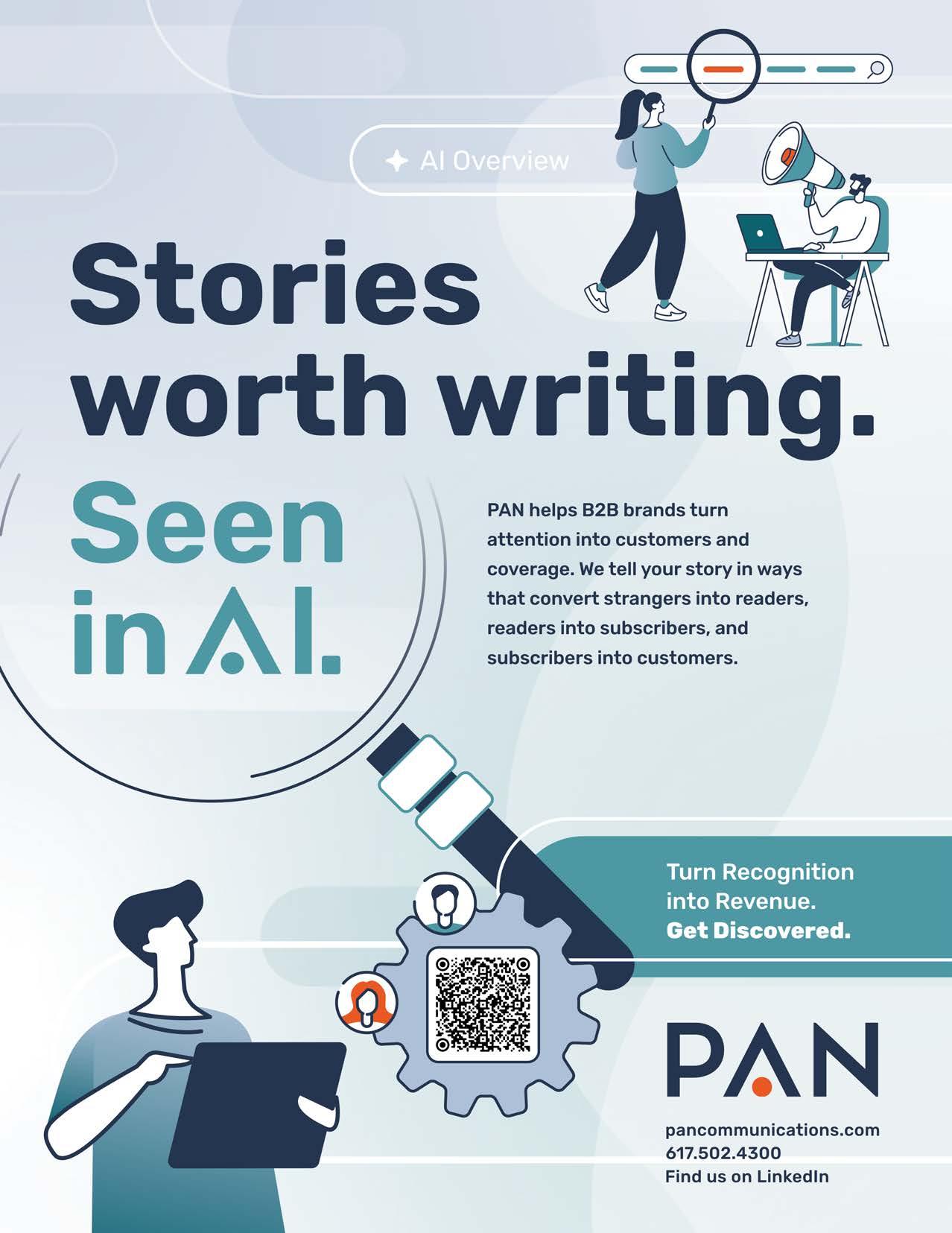

Maybe you’ve noticed something in the last month: Everyone seems to be talking about a bubble in the AI sector. I’ve been hearing whispers about it since the beginning of the year, but for the past few months, the tenor has changed, the chatter palpably louder.
Unless you’ve been living under a rock, you’d know the markets have reached all-time highs this year, powered primarily by ridiculous investments in the tech sector. And a disproportionately large amount of this investment boils down to spending on AI companies as well as the ancillary products and services that provide AI’s materials and infrastructure: everything from data centers to chip makers to the mining companies they rely on to build them.
AI chip maker Nvidia broke records this year when it became the first publicly traded company to be valued at $5 trillion, which, by comparison, is greater than the GDPs of Germany, India or Japan. The company, which has seen its stock surge 50 percent in the last year, now makes up almost 10 percent of the S&P 500. Nvidia is just one company to witness dizzying investment thanks to its involvement in AI. Software company Palantir has seen its stock price gain more than 150 percent in the last year. Nuclear technology company Oklo, which has received massive investor attention due to speculation that its nuclear energy might someday power AI data centers, has similarly been a big beneficiary of investment. Other big AI players, such as chipmaker AMD, Google, Microsoft and Meta, have seen their stock prices surge in recent months.
You don’t need to be Jim Cramer to realize there’s a lot of eggs being put in one basket here, that too much of the U.S. economy is riding on the success of one sector and that the financial markets are increasingly being held aloft by a few mega-cap AI darlings. I’m no expert, but this sort of concentration can’t be good. Especially considering the tech sector’s big AI bets aren’t resulting in the returns one might expect. Investors are blindly throwing wads of cash at any company containing the letters AI, which, of course, is causing more companies to rush more unbaked AI products into the marketplace, and much of what they’re producing, unfortunately, is underwhelming. Indeed, a damning August MIT report found that 95 percent of corporations that adopted Generative AI programs saw those initiatives fail to deliver any measurable financial value. The hype simply isn’t matching reality; the stock price is superseding whatever underlying value those products actually have. And this kind of speculation over value is an archetype example of what becomes an economic bubble.
So, perhaps it’s no surprise that a growing chorus of investors is warning that current AI valuations are untenable and that the stock market is primed for an imminent correction. Hedge fund manager Michael Burry—who famously predicted the 2008 U.S. housing market crash—made headlines when he implied in a social media post that the AI bubble was here. Burry’s ominous warning was followed by comments from CEOs of Goldman Sachs and Morgan Stanley, who both suggested we could see a drawdown of somewhere between 10–20 percent in the markets within the year. It was later discovered that Burry has been betting against Palantir and Nvidia, just like how he shorted the subprime mortgage market. That’s not a good sign.
Reality finally seems to be catching up with the markets. Tech stocks took a dive in late October, setting the stage for an unusually sour period. Palantir’s stock plunged, with Nvidia following suit. AMD cratered and Meta’s stock slipped after reporting disappointing third-quarter results, and the same happened to Google and Microsoft despite resilient quarterly earnings. Add to that the massive recent layoffs that’ve rocked the tech sector—Amazon, IBM, Intel, Oracle, Salesforce, among other—and we might be compelled to ask: Is the runaway AI bull finally losing steam?
Granted, people have made a lot of predictions about the stock market over the years. There are plenty of reasons to believe the rally could continue and the AI wave will keep rolling, at least for the time being. Especially considering the federal government’s recent 10 percent stake in Intel, as well as President Trump’s proclivity to treat Nvidia like a bargaining chip when discussing trade with China. And the fact remains that, given the enormous levels of current spending in AI infrastructure, investors remain optimistic that AI valuations will remain high. Finally, there’s the unshakable idea that AI is, by definition, one of those rare, once-in-a-generation, “this changes everything” breeds of revolutionary technology. There remains a lot of interest in AI, and that doesn’t appear to be going away anytime soon.
There have been a number of bubbles over the years. We’ve been down this road enough times to know that innovation arises out of ecosystems characterized by wanton waste. Think of the early web players that didn’t survive the dot-com crash: AltaVista, Excite, Lycos, Pets.com, Webvan, and countless others. And yet the Internet remains. Think of the dead social media platforms: Friendster, Digg, Google Plus, Myspace and Vine. And yet social media is bigger than ever.
We all know who the big AI players are today: OpenAI, Google, Meta and Microsoft. But who’s to say they’re going to be the legacy AI players of tomorrow? It’s clear that AI is here to stay. But how big this bubble gets—and who survives—remains anyone’s guess.
— Jon Gingerich

EDITOR-IN-CHIEF
Kevin McCauley kevin@odwyerpr.com
PUBLISHER John O’Dwyer john@odwyerpr.com
SENIOR EDITOR Jon Gingerich jon@odwyerpr.com
ASSOCIATE EDITOR
Steve Barnes steve@odwyerpr.com
CONTRIBUTING EDITORS
Fraser Seitel
EDITORIAL ASSISTANTS & RESEARCH
Jane Landers
Melissa Webell
Advertising Sales: John O’Dwyer john@odwyerpr.com
O’Dwyer’s is published seven times a year for $60.00 ($7.00 a single issue) by the J.R. O’Dwyer Co., Inc. 271 Madison Ave., #1500 New York, NY 10016. (212) 679-2471 Fax: (212) 683-2750.
© Copyright 2025 J.R. O’Dwyer Co., Inc.
OTHER PUBLICATIONS:
www.odwyerpr.com
Breaking news, commentary, useful databases and more.
O’Dwyer’s Newsletter
A six-page weekly with general PR news, media appointments and placement opportunities.
O’Dwyer’s Directory of PR Firms
Listings of more than 1,250 PR firms throughout the U.S. and abroad.
O’Dwyer’s PR Buyer’s Guide
Products and services for the PR industry in 50 categories.
jobs.odwyerpr.com
O’Dwyer’s online job center has help wanted ads and hosts resume postings.



While the likelihood of workers being completely replaced by Gen AI remains somewhat small, there’s a good chance their jobs will transformed by the technology, according to a recent report. By Steve Barnes
AI may not be ready to take your job currently, but odds are that it will at least transform what you do at work and make it necessary for you to update your work skillsets, according to a new report from Hiring Lab, the economic research arm of job search platform Indeed.
“AI at Work Report 2025: How GenAI is Rewiring the DNA of Jobs” looks at almost 2,900 work skills to find out how much each of them is likely to be changed by the continuing development of GenAI.
Indeed’s GenAI Skill Transformation Index measured the cognitive and physical demands of each skill and then estimated GenAI’s capacity to perform it.
It then ranked job skills by the level of transformation they are likely to experience—minimal transformation (job functions remain largely unchanged), assisted transformation (GenAI offers limited or generic support), hybrid transformation (GenAI performs most of the routine work, with human oversight) and full transformation (GenAI independently executes tasks).
The results show that the likelihood of workers being totally replaced by Gen AI is still rather remote. Only 1 percent of the job skills measured by the Index came under the “full transformation” header, with 40 percent registering as likely to experience minimal transformation, 19 percent set for assisted transformation and 40 percent likely to face hybrid transformation.
Indeed Hiring Lab: A quarter of U.S. jobs are highly exposed to GenAI transformation
Overall, the study says that more than a quarter of the jobs that were posted on Indeed in the past year could be “highly” transformed by AI.
Not surprisingly, jobs focusing on tech skills are considerably more vulnerable than others. More than half (54 percent) of jobs in the hybrid transformation category are tech-related and for full transformation candidates that number rises to 57 percent. The threat is greatest for such positions as software developers, who face an 81 percent chance of hybrid transformation. Others at-risk sectors for hybrid transfor-
mation include data & analytics (79 percent), accounting (74 percent), insurance (70 percent) and marketing (69 percent). What’s the biggest plus? Holding a position where your physical presence is essential to getting the job done. For example, more than two-thirds (68 percent) of nursing positions were judged to face minimal transformation, with driving (68 percent), childcare (66 percent) and construction (64 percent) also ranked at or near the top.
One of the main trends that the survey uncovers is a sea change in the relationship job holders should have toward their work. For software development teams, for example, the study authors note that “as GenAI takes over routine coding tasks, human developers will shift from ‘doing the work’ to ‘directing the work.’”
But that emphasis on overseeing rather than producing could make it necessary for workers to be able to beat GenAI at its own game. “To oversee Gen AI effectively,” the report says, “workers will very likely need to be able to outperform it in reasoning, domain expertise and context.”


According to a recent report, brands are coming up short when it comes to earning the trust and loyalty of female audiences.
By Steve Barnes
Brands have a bit of catching up to do when it comes to meeting the needs of the female audiences they target, according to a new report from Gatesman.
“Women ReKnown,” a project endorsed by the Geena Davis Institute, finds that women are considerably more skeptical about big global brands than men. While 36 percent of the men surveyed said that they trust those brands to put consumers before profits, fewer than a quarter of the female respondents agreed.
In addition, women are more likely than men to favor price over brand identity. More than four out of ten (41 percent) female respondents said they were “more likely to sacrifice brands for savings,” a number that dropped to 34 percent for male respondents.
Even purpose-driven brands are taking a hit with female audiences. While about half (49 percent) of the men surveyed said they trust purpose-driven brands, only 41 percent of women agreed.
This becomes more important when the
financial power of women is taken into account. According to the report, women are the decision makers behind 85 percent of day-to-day spending choices and 80 percent of the healthcare spending choices for their families.
To uncover some of the reasons for this, the study looked at how women feel about a range of topics and then pointed out strategies for how marketers can successfully respond.
Noting that many women are in the process of self-reflection, Gatesman SVP, Director of Communication Susan English and author of the report, notes that there is often a tendency to resist when others, including brands, presume understanding. To counter this, it is suggested that marketers avoid language that speaks definitively about women’s lives and tries to tell them how to feel.
The report also says marketers should emphasize positive messaging, focusing on stories that promote empowerment and control, as well as ones that help to solve
problems or streamline the steps of day-today tasks.
Knowing what female audiences expect from communications is also key to ensuring the success of the messages being delivered. While many of those responding to the survey said they appreciate efforts to be inclusive, they added that inclusivity should consist of more than simply being reduced to a checkbox on a marketer’s to-do list.
Another essential factor is knowing where to reach women. Social media dominates their media consumption, with more than 87 percent of Millennial and Gen X women saying that they use social media (with Facebook at the top of the list)—but only 24 percent said they trust social media companies. Plus, such media platforms as TV, radio and magazine (though not newspapers) remain popular.
When it comes to AI, female respondents were more hesitant than their male counterparts, with 33 percent noting that they had experimented with AI, as opposed to 44 percent of men. However, women who have used AI in their work environment are more comfortable using it for personal purposes.
“By understanding what women value in their lives today,” the report says, “you can tap into their underlying needs and position your offerings to deliver.”
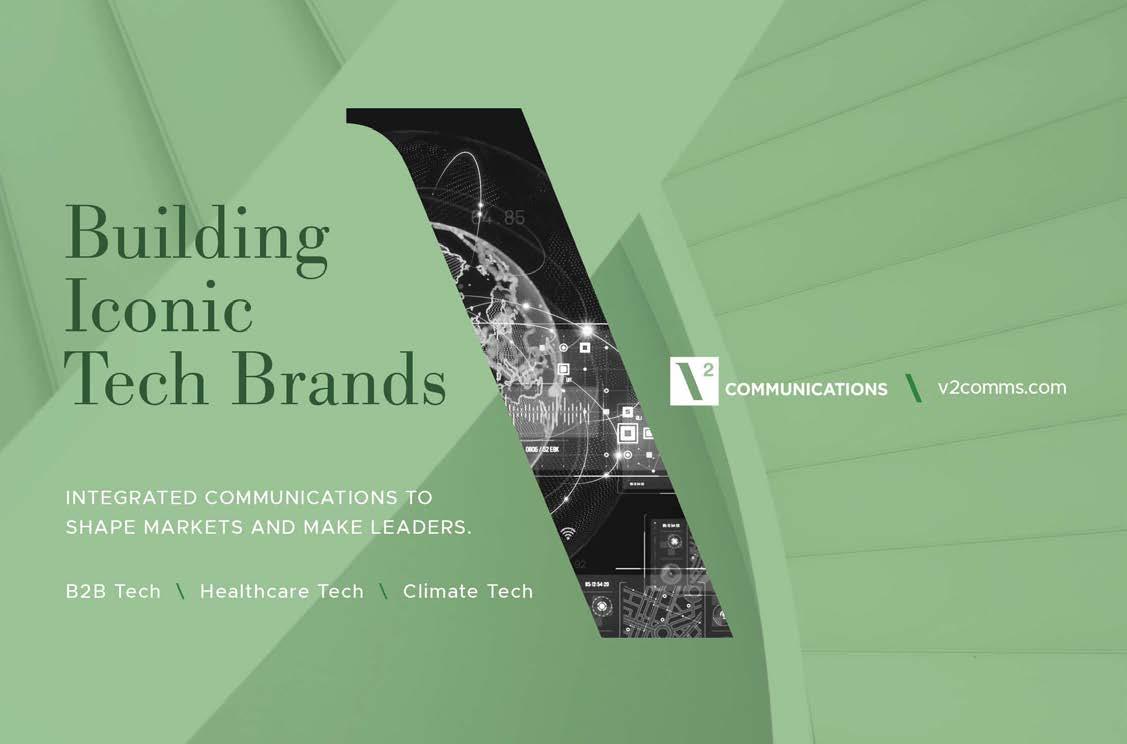


With the arrival of GenAI summaries, PR is tasked with ensuring stories are seen, surfaced and accurately represented by systems most of us don’t control.
By Zareen Fidlon
The ground is shifting beneath PR’s feet.
It’s not just the volume of coverage that’s changing, it’s the way content is discovered, digested and redistributed. Over the last five years, the communications industry has faced major disruptions, including shrinking newsrooms, rising distrust in media and a shift in audience behavior away from traditional news sources.
Meanwhile, search engines, smart assistants and social platforms increasingly serve up answers instead of links. With the arrival of GenAI summaries, the journey from headline to homepage has been rerouted. PR is no longer about crafting the right story; it’s about ensuring the story is seen, surfaced and accurately represented by systems most people don’t control.
PAN’s 2025 Brand Experience Report shows a 41 percent decline in traditional media mentions over the past year. At the same time, competition across non-traditional PR channels grew, with an 80 percent increase in authors across social media.
Traditional search has ceded ground to zero-click behavior
Gone are the days of someone perusing a brand’s website and clicking through to multiple pages. Instead, people often get what they need from AI summaries. In fact, PAN’s report also shows Google’s AI Overviews increased by 102 percent between January and March 2025. Putting this more simply: The tactics you used to boost brand mentions in the past five years—the past three years, even—may not work anymore. Today, visibility must come from many sources, and PR professionals must adjust.
Brands are still producing stories and securing coverage. But the value of those placements is changing. Readers are no longer engaging the way they used to, and discovery is happening upstream of the click.
This is where PR’s role expands beyond traditional awareness. For years, marketing teams have split “brand” and “demand” into separate strategies, one to build reputation, the other to drive leads. But in an AI-shaped media landscape, those walls no longer make sense.
Every earned placement, podcast interview or social conversation has the potential to accelerate demand when it’s connected to the right keywords, linked to the right landing experiences and reinforced by campaigns downstream. Conversely, demand

generation efforts gain more stopping power when they’re backed by the authority and trust PR builds. In other words, brand fuels demand, and demand strengthens brand. The challenge is to design PR programs that intentionally do both.
Thirty-eight percent of people say they mostly or completely trust AI-generated answers. Thirty-eight percent also admit they’ve skipped visiting a website because the AI summary already gave them what they needed. This is the new filter.
Discovery is happening within platforms, not beyond them. They’re not just distribution channels; they’re choosing which voices and perspectives get surfaced. For PR, that means learning to work with AI systems, not around them. Branded content still plays a role, but it’s often surfaced without a clear path back to the original source. Search engines are resolving queries at a glance, and social algorithms continue to suppress outbound links.
Visibility hasn’t disappeared. It’s been rerouted through systems that prioritize speed and containment over depth. This raises a critical question. If AI is now the interpreter between your brand and your audience, how do you ensure that it’s adequately conveying your message? We’ve already seen examples across industries where AI-generated summaries simplified, skewed or misrepresented source content.
With no editor on the other side of the algorithm, the responsibility now falls on communications professionals to structure content with clarity, use precise language and ensure credible sourcing. Trust in AI may be rising, but trust in your brand still depends on how—and whether—that story is told correctly.
What’s required now: PR must expand its definition of value
This isn’t about using AI to write faster or churn out more releases. The real value is in using AI to map where and how your story is showing up, which questions it’s answering, and where competitors are filling the gaps. It’s about spotting narrative white space early and shaping thought leadership that’s more likely to be pulled into these summaries.
But it requires human judgment. AI can highlight patterns and possibilities, but brand voice, context and credibility come from people. Tools will change. Principles,
authenticity, trust and clarity should not. Mentions matter, but they’re part of a larger visibility system. PR must now work across surfaces, formats and entry points. Here are five areas worth prioritizing: Focus on high-trust, niche channels. Podcasts, Slack groups, Reddit threads and newsletters are where buying conversations are taking place. These are not fringe spaces. They’re primary forums for peer validation. Make content legible to AI. Structure copy around questions and answers. Use clear headers and source links. Help search systems and AI tools understand your content and reference it accurately. Connect PR with downstream teams. Treat PR as an input to demand generation and SEO. Ensure coverage is mapped to the right keywords and is available for repurposing across campaigns.

Monitor conversations outside your metrics. Dark social, private messages, and closed communities often shape perception more than public posts. Talk to your advocates and customers. Learn where they’re sharing stories about you.
Lead with ideas, not just headlines. The most effective thought leadership now earns visibility through originality and clarity. Publish clear points of view, supported by data or experience. AI and media both respond to content that feels real and sourced. Brands that prioritize clarity, utility and trust are seeing stronger results. In the financial sector, firms that publish well-structured FAQs and explainers have seen increased inclusion in AI summaries. In healthcare, trusted voices with strong citation structures are outperforming brands with more polished, but less accessible content.
So … where does PR go from here?
Traditional placements still offer value, but they no longer do the work alone. AI Overviews, social algorithms and dark social dynamics have created new barriers between brands and audiences. To stay effective, PR must adapt to this shift. That doesn’t mean working harder. It means working with more precision—listening to where audiences are paying attention and placing ideas where they’ll be picked up.
Social strategy must reflect the current environment.
Zareen Fidlon is Senior Vice President of Integrated Marketing at PAN.
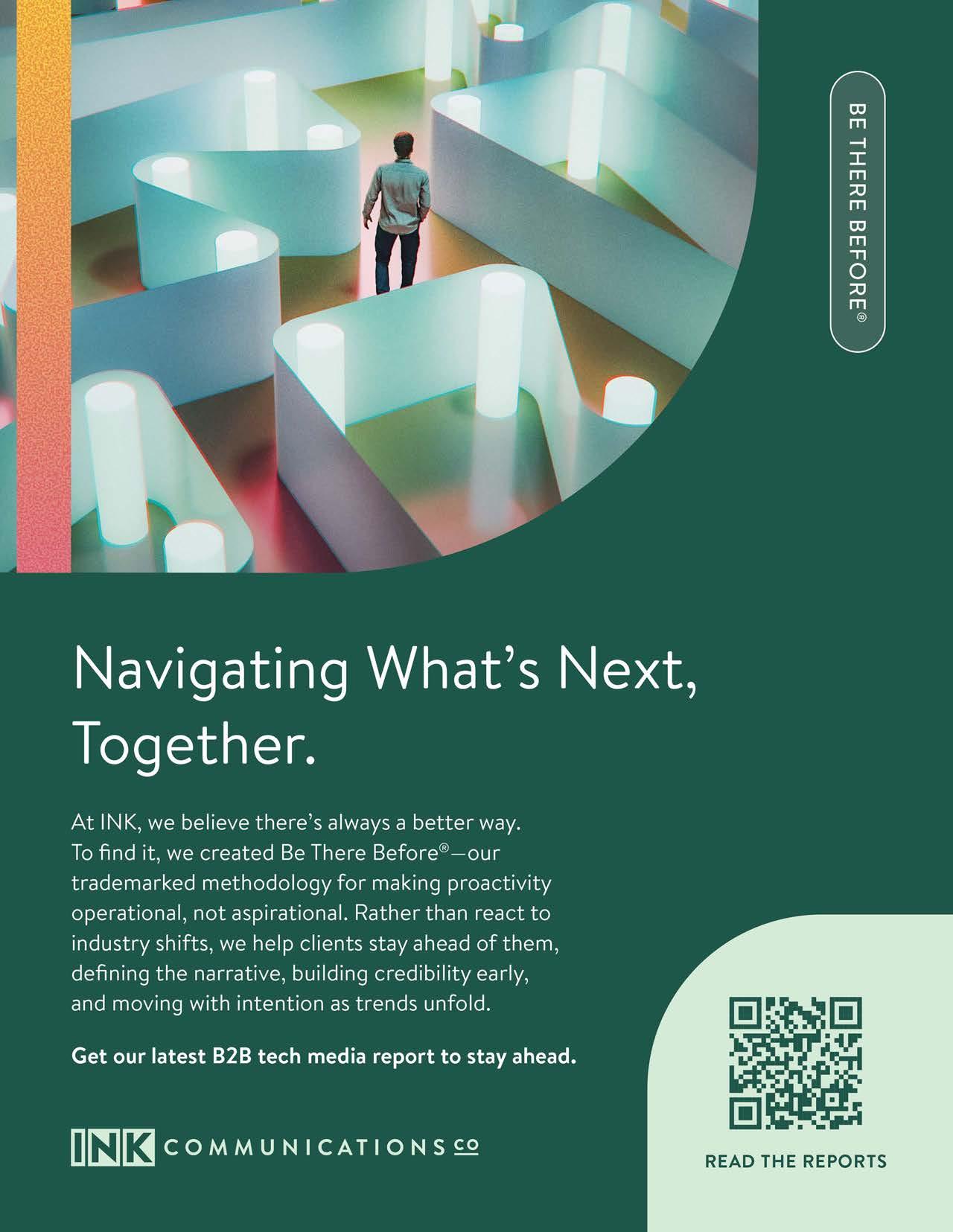

How to step out from behind the personal branding curtain with a clear message that showcases your leadership skills within 30 days.
If there’s one common comms story lately, it’s that senior-level jobs are harder to come by. I’ve spoken with dozens of comms leaders who’ve led crisis responses, shaped executive messaging and built brands who say they’ve been ghosted by companies or seen their resumes buried.
It’s a dynamic built on a perfect storm that began in 2022, as inflation created years of recession fears. 2024 brought election uncertainty that tightened corporate budgets, and tariffs in 2025 added new doubts about growth. On top of that came AI, fooling executives into thinking that strategic communications continues to be a “nice to have” instead of a “need to have.”
The irony is that companies are looking to hire. But as two communications industry recruiters and an economist told me on a recent panel, companies are moving slowly, and executives want “unicorns” who can do it all and stay forever. Additionally, many comms pros have spent their entire careers helping others build personal and professional brands while keeping themselves in the shadows. But in 2025, that invisibility isn’t a strength. Comms professionals are unemployed, companies struggle to navigate crises and non-profits are scrambling to keep donors engaged.
If you want to thrive in this market, it’s time to treat your own brand with the same mindset that you would bring to clients or to a company. Here’s a 30-day personal branding strategy that I developed after learning from senior communications executives about their job search struggles.
Week 1: create your message
Start where every good campaign begins: a message that stands out to a target audience, in this case, senior executives of agencies, mid-level companies looking to scale and major corporations. Narrow your search by answering six key questions.
• What are your three best “hard” skills (like “training AI systems to reduce costs and increase productivity”) and “soft” skills (like “using psychological profiling to keep stakeholders focused during a crisis”?
• Don’t waste your message’s value. What are the kinds of organizations that benefit most from your strengths.
• Which problems do you solve with those strengths, and how can you demonstrate results from the past that apply to the problems today’s interviewers seek to solve?
• What are the personal pain points of

By Dustin Siggins
the executives you’ll work with and how can your organization-wide solutions solve those problems?
• Which formats best highlight your value? (This is less important for the application and interview part of the process and more for the pre-interview personal branding steps laid out below.) For example, if you hate being on camera, don’t force yourself onto a video. Maybe you’re a great writer—so put your time into that talent and get those forward-looking op-eds published.
• Where can you be counterintuitive or challenge conventional wisdom to stand out?
By putting in this work, you’ll crystallize for yourself and for everyone else what you do, why you do it and why they should pay you a lot of money to do it for them.
Weeks 2–4: activate your network
Once your message is defined, test it— and refine it—through your relationships.
Identify two groups of contacts: 10 people whose organizations could hire or partner with you within three months and 30 more who might do so in the next six months once they fully understand your value.
If 40 people sounds intimidating, that’s the point. You might think there are only 20 people in your network because that’s who you communicated with in the past year. But my company grew 70 percent in 2022, after I reconnected with people I hadn’t spoken to in a decade. We generated months of business and a referral that led to more business the following year.
I challenge you to go back years into your personal and professional history. Find the people who you know are dynamic and amazing—and would be happy to reconnect with you.
Once you have your list, ask them for an informational interview. Let them know you have a plan and would like their professional insights into it. You’re not asking for a job or a referral—merely for their insights, frustrations and successes.
And by the end of those virtual or in-person meetings, you’ll have a much clearer idea of both where you fit in the market— and how to prove it.
It’s time to jump into the biggest and most important virtual coffeehouse around: LinkedIn. It’s no longer just a job posting platform or a billboard; instead, it’s the place to hang around with those who live
hundreds of miles and a few keystrokes away.
With the foundation built by the previous steps, accelerate your job search journey with the following six steps:
Post three to four times a week. Start by thinking through concepts: What’s something you’ve always wanted to say but never have? What does the industry need to know that nobody else is saying? What’s something you can show is valuable … that’s also counter-intuitive to your target executives?
Then, make sure to bring your audience along on a journey. Don’t just state a lesson; show how you’ve navigated the challenge in the past. Discuss how something in the news can teach others how to think and do better.

In other words, your posts should show the value people will get by hiring you. Engage meaningfully. You don’t want to be seen as someone who only takes from your valuable connections, so help build them up. Ask questions, challenge norms—respectfully—and share your useful perspective on their posts. LinkedIn is all about connections and community, and you’ll become a valuable member of the community by participating in everyone else’s corner of the virtual coffeehouse.
Expand deliberately. Each week, request connections with decision-makers and influencers who fit your target personas. And skip the form letters when reaching out; personalize every request.
Follow up quickly. Send a brief, genuine note within 24 hours of connecting, ideally referencing something specific from their work, the relevant marketplace or your engagement with them somewhere in the past.
Move strong connections offline. A quick call or coffee chat still builds great rapport.
Set boundaries. Block dedicated time for posting and engagement, so LinkedIn supports your goals instead of distracting you. The key to LinkedIn is to stay focused on the outcome you want. Don’t get distracted by people who exaggerate their accomplishments or others’ vanity engagement. Nerd out where it makes sense—as part of your business outcome, to show that you’re a real person with real feelings. But don’t get
As AI adoption accelerates, Generative Engine Optimization is quickly becoming a core function of modern reputation management.
Communications, at its most fundamental level, is all about building and then protecting a brand. It’s grounded in getting the right messages in front of the right audiences at the right time—and keeping misperceptions and negativity in check—so audiences know and trust your brand.
The PR industry was founded largely on the premise that journalists were critical in helping audiences find, understand and engage with your brand. For many tech companies, industry analysts helped audiences put those brands into relevant categories and among similar companies. As the world went digital, SEO ensured your brand surfaced amid a sea of results when a user searched certain keywords.
But how does that change when artificial intelligence itself becomes an audience— and a gatekeeper—to how other audiences come to know your brand? Can communications professionals ensure key messages and stories reach audiences when AI tools like ChatGPT, Gemini, Copilot and Perplexity determine discovery?
Exploring a big opportunity—and guarding from risk
As AI-powered answer engines are rapidly becoming the dominant gateways to information, communications professionals face a new frontier: Generative Engine Optimization. This emerging discipline builds on traditional SEO, focusing on optimizing for AI assistants and chatbots that audiences increasingly rely on to find information and get questions answered.
The rise of AI has direct implications for brand visibility, credibility and reputation, making strategic communications critical in shaping how brands show up in this evolving environment.
Unlike traditional search engines, AI answer layers don’t simply fetch the topranked Google results; they instead evaluate and synthesize data.
Brands that deliver high-quality, authentic and technically optimized content across channels will hold a first-mover advantage. Investing in AI visibility is no longer optional. Failing to engage with GEO risks misrepresentation, or worse, omission entirely. As AI adoption accelerates, the window to shape brand perception in these systems is closing fast.
Starting with a clear understanding
Before improving your visibility in AI answer layers, you must first understand
the current state of your brand in AI. This means conducting cross-platform audits— testing queries about your brand, category and competitors to see what AI tools surface:
Content readiness: Is your brand’s content structured and optimized so AI can easily find, interpret, and represent it accurately?
Search visibility: How often and where does your brand appear in AI-generated responses? Are competitors outshining you?
Brand vulnerability: Which weaknesses—outdated content, inconsistent messaging, misinformation—pose the greatest risk if amplified by AI?
When V2 has conducted audits on behalf of clients, results have exposed outdated or inaccurate messaging, unexpected competitors or total absence from seemingly relevant queries. The results also reveal which sources AI relies on, which vary by model and query, but consistently prioritize authoritative outlets: credible media, trusted wire services, Wikipedia and brand-owned sites.
Shaping your brand’s AI reputation
Armed with the information from an audit, the next question is simple: What can communications do to influence and improve GEO outcomes? Fortunately, many of the strategies have been core to communications and PR playbooks for decades. Furthermore, brands that have embraced an integrated strategy that prioritizes consistent messaging and storytelling across owned, earned, shared and certain paid channels will have a leg up.
Earned media still reigns—but needs a modern twist
High-authority press coverage plays a critical role in how AI engines assess brand credibility. Stories in trusted outlets are treated as fact-checkable signals of authenticity, and increasingly, as the data that generative systems use to shape their responses.
According to a MuckRack report, more than 95 percent of links cited by AI come from non-paid media and nearly nine in ten are earned sources. About 27 percent of all citations originate from journalistic outlets; a share that rises to nearly 49 percent when users prompt for recency (queries like “what’s new” or “latest”). The takeaway is clear: earned, authoritative coverage fuels the AI answer layer.
By Katelyn Holbrook
Tactic: Elevate media relations to focus on thought leadership placements, executive visibility and expert commentary in well-indexed, high-domain-authority publications that AI systems are most likely to cite and trust.
Owned content is your brand’s AI foundation
AI systems routinely scan brand websites and blogs for structured, reliable information. Content that’s technically accessible (via schema markup, logical hierarchy, etc.), deep in expertise and consistently updated performs best.

Tactic: Rebuild cornerstone-owned assets like your “About” page, executive bios and product information to be not just human-friendly, but AI-digestible. Think clear language, semantic structure and link-rich references.
Press releases: the comeback kid of GEO
In the age of AI, press releases serve a dual role: reaching media and feeding structured data directly into AI knowledge graphs. Leading wire services now offer tools that help optimize releases for bot-readability.
Tactic: Standardize your press release format to include structured metadata, subheads, quotes and factual data, making it easier for AI engines to parse and prioritize your content.
Monitor AI representations—and adapt quickly
Platforms like BrandRank.AI provide dashboards to track how brands appear in AI-generated answers. This visibility is key to adapting strategy in real time.
Tactic: Incorporate GEO audits into your media monitoring workflow. If an AI engine misrepresents your client’s product, adjust the upstream content—press, owned, social or Wikipedia—to address it.
Wikipedia: small edits, big impact
Because AI engines use Wikipedia as a key source, well-cited entries can significantly influence brand narratives.
Tactic: Don’t edit directly—that’s against Wikipedia policy—but ensure your communications efforts generate high-quality
_ Continued on page 17


For technology brands, trade shows are where reputations are defined, relevance is maintained and relationships are formed in real-time.
Trade show season is more than a flurry of booths, badges and branded tote bags. It’s where brands have the opportunity to shine or fade into the background noise of the expo floor. For technology brands especially, these events are the heartbeat of industry storytelling. They set the tone for what innovations matter, which companies are leading and how audiences will remember the moments that shape the year ahead. Trade show season is more than a flurry of booths, badges and branded tote bags; it’s where brand reputations are forged in real-time. For technology brands especially, these events define who leads, who follows and which innovations truly matter.
From CES to IFA to Pepcom, what happens in those few days can echo far beyond them. From a PR perspective, trade shows aren’t just events anymore. They’re inflection points that define reputation, spark relationships and prove a brand’s staying power.
Framing the moment: your narrative shapes the narrative
The brands that stand out are not always the ones with the flashiest displays or the biggest giveaways. They’re the ones with a clear point of view. Every show is a crowded marketplace of ideas, so defining your story early is essential. Every show is a crowded marketplace of ideas. Define your story early or risk being drowned out.
What role do you want your brand to play in the broader industry conversation? Is your innovation changing how people live, work or connect? How does it fit into cultural, economic or environmental trends shaping your category?
At recent tech trade shows, the brands that tied product innovation to larger cultural shifts such as sustainability, accessibility or the responsible use of AI dominated earned coverage and social engagement. Those who focused only on specs got lost in the shuffle. The takeaway: Media and attendees are drawn to meaning, not just messaging. Your story should not stop at what’s new but instead make people care about why it matters.
A perfect example of this approach came during a recent CES, when Casio introduced its first smart outdoor watch. Rather than centering messaging solely on technical specifications, Coyne PR developed a storytelling strategy focused on real-world

use cases, including how the watch seamlessly fit into everyday life, from outdoor adventures to fitness tracking to professional wear. To extend visibility beyond the show floor, the team also livestreamed the press conference, ensuring both media and consumers could experience the unveiling in real time.
By emphasizing lifestyle relevance and human connection—and pairing it with an inclusive, digital-first distribution strategy—the launch resonated with audiences and the media alike. Coverage spanned tech, lifestyle and business outlets, proving that when brands connect innovation to experience, they not only capture attention at the show but also sustain it long after the event ends.
Turning the booth into a brand experience
When the show begins, your booth becomes your stage. Every light, color and interaction tells part of your story. A good booth shows what you do. A great one shows who you are.
Think immersive demos, intentional design and storytelling moments that invite curiosity. The most memorable activations bring the brand to life in an experiential way that creates an emotional connection.
And don’t forget your digital footprint. Real-time storytelling—posting quick takeaways, Q&As or short video clips—can extend your reach far beyond the convention center.
Research shows that brands using video and live content consistently outperform static posts across social platforms. According to a 2025 LinkedIn performance benchmark report from Social Media Today, video content drives 73 percent more impressions and 52 percent more views than other post types. Similarly, Sprout Social data finds that live video on platforms like Instagram can generate double the engagement rate of traditional static posts.
In other words, motion catches attention, and in the world of trade shows, that attention often translates into stronger booth traffic, broader reach and deeper brand engagement.
Even the best booth cannot shine without the right team behind it. Every representative, from your CEO to the person scanning badges, plays a role in shaping perception.
Media training helps spokespeople stay
By Christine Azzolino
sharp under pressure and equipping your floor team with a few key messages keeps conversations consistent and confident. At Coyne PR, we often conduct pre-show training sessions that include scenario-based Q&As, quick messaging refreshers and social media dos and don’ts.
Trade shows move fast, and your people are your brand’s living, breathing press kit. The impression they leave will outlast your display graphics every time.
Staying agile and opportunistic
No matter how airtight the plan, something will surprise you. A competitor may drop big news. A journalist may stop by unannounced. A viral moment may unfold on social media within minutes.

The ability to pivot quickly is what separates good PR from great PR. Having a point person on-site to adjust messaging, chase new media opportunities or capitalize on spontaneous buzz is essential. Because in the world of trade shows, the only constant is change —and a PR pro in motion stays in motion.
Coyne PR often monitors live media trends and conversation spikes to identify openings. For instance, when a major outlet at CES 2025 shifted coverage to focus on sustainability themes mid-show, we quickly repositioned client talking points to highlight eco-minded design. The result: additional earned media placements without additional budget.
When the booths come down, the show is not over. A strong follow-up plan turns those handshakes and happy hours into headlines.
Send personalized thank-you notes, share extra assets and pitch post-show story angles that keep the coverage coming. Use what you learned in conversations onsite to tailor those pitches; if a journalist showed interest in a particular feature or trend, reference it. That level of attentiveness stands out.
Then, dig into the data: placements, impressions, social engagement and booth
Continued on page 17
How an executive visibility program can establish trust and credibility for brands and allow them to stand apart from the competition.
Executive leaders have long served as the voice and face of their company when the stakes are high, whether it’s around earnings, industry-changing acquisitions or moments of crisis. But today, their visibility is essential.
The role of representing a company has evolved. In a world of constant disruption, brands can soar or stumble overnight. Today’s leaders don’t just guide their organizations through turbulence; they embody their brands with every word and action. To earn trust and inspire loyalty, they must connect with stakeholders across platforms, in every format and in real-time.
A steady and strategic voice for brands Disruption is now the norm. EY calls the current state we’re living in the “NAVI” world: nonlinear, accelerated, volatile and interconnected. In this kind of environment, visibility doesn’t just raise your brand’s profile; it empowers your brand to lead. For established brands, it reinforces strength. For newer ones, it highlights vision and momentum.
Executive visibility can also stabilize your organization during transformational periods such as:
• Leadership changes.
• Mergers and acquisitions.
• Expansions and relocations.
• Operational or mission changes.
A planful, purposeful approach
An effective executive visibility program doesn’t happen by chance. It must be strategic, planful, ongoing and aligned with business goals.
Every program needs intention and consistency, whether it’s supporting a startup founder or a seasoned industry leader. These best practices can help you refine your approach:
Find your narrative
Many organizations consider themselves thought leaders, but real thought leadership comes from having a clear, relevant narrative. A strong narrative should do three things:
• Align with your company’s purpose or transformational goal.
• Reflect your stakeholders’ beliefs.
• Offer a compelling vision for where your industry or category is headed. Sometimes that story comes naturally. Other times, it takes some digging. Consider reviewing media coverage and industry conversations to spot emerging
themes. Better yet, conduct industry or voice-of-customer research to get firsthand perspectives that you can pair with insights from your executive team and subject matter experts.
Assessing the broader landscape gives you a realistic view of how your brand is showing up and can help you identify new opportunities that align with your growth strategy.
Secure executive commitment
You may have the lead on creating or managing your organization’s executive visibility program, but your executives need to be fully engaged. They need to buy into the narrative, use it consistently and inspire others to join them. They also need to feel confident as thought leaders—and at times as newsmakers.
If media coaching hasn’t happened recently, now’s a good time to schedule it. Executives should be ready to participate in media interviews and connect their story to what’s happening in the world today.
Engage through earned media
Some organizations hesitate to pursue earned media opportunities, seeing them as risky or unpredictable. But when done right, it builds credibility and provides reusable content for other channels.
Build and maintain relationships with the media. Pitch stories that align with your business priorities. Offer executive interviews when relevant to breaking news. And always stay ready. Reporters often reach out for quick-turnaround quotes or interviews.
Invite media to experience your brand firsthand. Invite them to events where your CEO is speaking. Schedule time with them at tradeshows. Invite them to company events. These moments of access and expertise often lead to stronger coverage.
Optimize for AI
More people are turning to generative AI tools for answers instead of traditional search engines. This is making AI tools the new gatekeepers of information—and why your content strategy needs to incorporate generative engine optimization.
AI models often favor reputable, consistent sources like established news outlets when crafting responses to questions and inquiries. Ideally, these established news outlets are part of the earned media strategy for your executive visibility program. They also prioritize credibility and rep-
By Leanne Lindseth
etition, favor consistent voices and clear messaging. This is why your executive’s talking points, key messages and any published content should be clear and consistent across digital platforms.
Amplify and extend
Once earned media is in motion, there are easy ways to amplify coverage and maximize it across paid, shared and owned channels.

For starters, share coverage internally with employees and externally on both corporate and executive LinkedIn pages. Paid amplification, whether it’s a sponsored post on Facebook or a boosted post on the executive’s LinkedIn page, can help you reach new audiences.
Digital platforms allow you to amplify coverage to key audiences wherever they are online, which gives you an even greater opportunity to be visible with the people that matter most to your organization.
Finally, think of how you can repurpose your content. Perhaps an op-ed could evolve into a timely blog post. Or maybe a topic an executive spoke about at an industry event could inspire a media pitch. The goal is to make every piece of content work harder for your brand.
Stay flexible and informed
Your executive visibility program shouldn’t be rigid. It should be flexible and evolve with changes in the news cycle, public sentiment and within your organization.
Stay informed on industry changes, global events and the news of the day. Revisit your plan when needed and be active in revising messages or even pulling the content if developments warrant it.
Your executive team will depend on you to be prepared. With a targeted approach to executive visibility, you can establish trust and credibility with your brand’s customers and other stakeholders. Provide reassurance and vision during times of disruption. And stand apart from competitors with thought leadership that tells a clear, consistent story.
Leanne Lindseth is Senior Director, Technology, at Padilla.


By Kersa Haughey
Generative AI is changing how people find and evaluate information. When someone asks ChatGPT, Perplexity, or Google’s AI Mode to “compare the top network security providers” or “name the leading data observability platforms,” AI tools don’t serve a list of links like traditional search. Instead, they compile information from across their training data and the web into a single, conversational answer.
Generative Engine Optimization, or GEO, is the emerging practice of improving how your company is represented within these AI-generated responses. It combines elements of technical SEO, structured content and public relations to help AI tools surface your company accurately and competitively.
For B2B tech companies, GEO matters because these tools are already shaping high-intent buyer research moments. According to Forrester, 89 percent of B2B buyers use generative AI during every stage of the purchasing journey.
As AI becomes a core part of the B2B tech buying process, it’s shaping buyers’ first impressions of brands. When potential customers ask AI tools for vendor recommendations, the results they see and how companies are described are often blindly trusted. That’s why it’s critical for companies to ensure accurate and consistent representation across AI tools to avoid being mischaracterized, overlooked, or left out of the conversation entirely.
What drives B2B tech visibility in AI-generated responses
Through INK Communications’ AI visibility/GEO audits for SaaS and managed services companies across sectors such as cybersecurity, fintech, supply chain and digital transformation, we’ve identified several controllable levers that B2B tech brands can use to influence how they show up in AI-generated responses to lower-funnel queries. We focus on lower-funnel queries because AI has compressed the traditional customer journey. By the time a buyer reaches your website, they’ve already entered the transactional phase, making these marketing levers mission-critical for driving sales impact.
Website
AI models rely on your website to understand your company’s identity, offerings and credibility. Some of the most frequently cited parts of B2B tech brand websites for lower-funnel queries include:
Core pages + product pages: AI consistently cites homepages, About pages and

product or solution pages for information about a specific company.
Owned Content: Blogs, case studies and ungated assets are cited by AI for more in-depth detail on a company’s approach, differentiators and association to certain topics, markets, capabilities, competitors and audience challenges and priorities. For branded and category-level queries, the most highly cited formats include comparison- and listicle-style blogs, “how we work” blogs, value-driven pieces, customer stories and FAQ-style content.
Optimizing your website for AI discovery requires thinking about both what your pages say and how they are built. The clearer and more structured your pages are, the easier it is for AI tools to extract and reuse the information they contain.
More ways to improve AI search discoverability include using semantic URLs that reflect topic intent (e.g., /top-threat-intelligence-platform instead of /product123), adding clear metadata, aligning copy with the queries you want to show up for (e.g., “What is a data observability platform?”), and writing in extractable sections that could stand on their own as short answers.
Business directories
Directory-style websites offer AI tools structured, concise and easy-to-reference data about specific companies, their market categories and how they rank within their space. AI tools rely heavily on company profiles, category lists and round-up style articles from sites like this when answering “top,” “best” or “leading” company/product queries.

Some top tips for increasing your brand’s influence via business directories include claiming your company profiles on highly cited directories, updating them (e.g., adding accurate company info, category tags and backlinks), encouraging verified
reviews and considering a paid “verified” profile.
Analyst and research mentions
Inclusion in analyst reports and research can be a key GEO signal for B2B tech, often more so for companies that play in legacy or highly competitive market categories. AI tools often reference market research to confirm which companies lead a category or represent emerging technologies.


To strengthen AI visibility through analyst relations, focus on expanding both participation and amplification. Beyond large firms, some niche analyst groups are also frequently cited by AI tools and can meaningfully influence how your brand is categorized. When your company is included in an analyst report, amplify that mention through an AI-friendly blog or press release that summarizes the inclusion and references the report’s language. Because most analyst research is gated and inaccessible to AI crawlers, these follow-up pieces ensure your company’s recognition is discoverable and registered as a credible third-party signal.
Earned media
Earned media validates your expertise, authority and market relevance for AI tools, which view news coverage as a trust multiplier. This is especially true when articles highlight company news like funding, partnerships, product innovations, customer
_ Continued on next page

Continued from page 16 wins, leadership hires and other milestones.
To increase the impact of your earned media on GEO rankings, pitch momentum-based stories that signal growth and leadership to outlets that AI often cites. Then, to increase the discoverability and value of earned coverage, republish articles as AI-optimized blog posts on your website, linking to relevant product or solutions pages and to the original media hit.
Press releases
Press releases are one of the most direct and controllable ways to feed AI tools timely information about your company. They help you establish a clear growth narrative for AI tools by creating a documented timeline of company progress, scalability and
Continued from page 14
traffic. The metrics validate your efforts and help fine-tune your next approach. Every show should make the next one smarter. Consider establishing a “post-show newsroom” model, where key team members debrief within 48 hours, update the media tracker and build follow-up content (such as recap videos, thought leadership articles or LinkedIn Pulse posts) that extend the narrative beyond the event itself.
The evolving trade show landscape
Trade shows are evolving as fast as the technology on display. The most successful exhibitors are leaning into smarter, more
Continued from page 12
caught up in irrelevant debates or discussions or showing what you had for lunch. By applying a business discipline to your LinkedIn strategy, your presence becomes a living portfolio of how you lead and think. By day 30: build your rhythm and your reputation
Within a month, the process will start to
Continued from page 13
citations and media coverage that Wikipedia editors can use to update brand pages.
GEO is the new front in reputation management
milestones.
The increasing importance of AI discoverability gives press releases new value and changes when and how you might write them. Some examples of new tactics to optimize press releases for GEO include publishing releases for all material updates (not just the ones that are newsworthy to media), using structured, query-aligned formatting and publishing self-hosted releases optimized for AI (like you would for your other web content) in addition to pushing across the wire.
In AI search, partnership content drives credibility by association. Connecting your company to established and well-regarded brands send signals of trust and relevance to AI tools and gives context for where your company fits into its ecosystem.
connected and more conscious approaches.
Artificial intelligence is reshaping event strategy, from predictive lead scoring to real-time analytics that identify high-value prospects and personalize follow-ups. Sustainability has become a defining element of reputation, with media and partners watching closely to see which brands are making genuine progress on environmental commitments.
Even hybrid formats are evolving, merging physical experiences with digital engagement through live-streamed panels, AR-enhanced demos and virtual press rooms. These “always-on” experiences extend the value of a booth appearance well beyond the show floor.
For PR professionals, these trends mean
feel natural. You’ll have a clear message, visible traction and a reliable cadence— roughly an hour a day posting and engaging, another hour establishing relationships and one to two hours strengthening deeper connections or collaborations. These small, deliberate actions compound quickly. You’ll begin to see stronger engagement, better introductions and more relationships that will result in referrals and other opportunities that will move you towards getting an interview with the
For communications leaders, GEO isn’t a technical sidecar to SEO—it’s a core function of modern reputation management. It requires cross-functional collaboration across PR, content, digital and executive comms to ensure alignment across channels.
The good news? The communications
To drive these kinds of credibility-building signals in AI search, look for opportunities to publish joint content such as blogs, reports, press releases and case studies with partners or customers.
The GEO mindset for tech brands
Generative Engine Optimization is about feeding the right information to the systems your buyers now use. In many ways, you’re marketing to AI search engines to influence how they surface and recommend your brand. Think of AI as a new stakeholder.
For B2B tech brands, that means creating content and digital signals that work together to tell a consistent and strategic story to the AI tools shaping how people discover, compare and choose you.
Kersa Haughey leads marketing, business development and AI strategy at INK Communications Co.
the work does not end when the lights dim. It’s about translating every moment, on-site or online, into lasting brand equity. Consider it your “booth-and-beyond” strategy.
Trade shows aren’t just about being seen; they’re about being remembered. The brands that treat these moments as part of their larger reputation strategy, not just a marketing line item, are the ones that keep the conversation going long after the floor closes.
And remember: In PR, the show must go on, but only after a really great post-show recap. Trade shows aren’t just marketing moments; they’re reputation moments. The brands that treat them as such don’t just show up; they stand out.
Christine Azzolino is VP at Coyne.
organizations that want you on board. Communications has always rewarded those who make others look good. But the era of quiet excellence is over. And building your personal brand isn’t self-promotion. It’s showing your leadership so that potential hires know that you understand that comms is a business investment, not a “nice to have” when the cash is available. Dustin Siggins is a former Capitol Hill journalist and Founder of the public affairs and PR firm Proven Media Solutions.
toolbox is already filled with what’s needed: strong storytelling, smart distribution and strategic media engagement. The difference now is ensuring those stories are optimized for the machines that increasingly shape human perception.
Katelyn Holbrook is Chief Client Officer at V2 Communications.


The tech media landscape has never been more complex—or more crowded. Traditional newsrooms are shrinking, beats are expanding and more journalists are leaving established outlets to launch their own newsletters or Substacks. Add in “AI slop” flooding every inbox and feed and you’ve got a landscape where attention is scarce and credibility is gold.
For tech communicators, that makes one question more important than ever: How do you ensure your brand stands out and earns trust amid constant change?
At Matter, our Tech PR team works across the spectrum of innovation—from cybersecurity and SaaS to AI, clean tech and more—and we’re seeing clear patterns emerge. The brands winning coverage and influence today are the ones rewriting the old playbook.
Story first, product second
The days of product-driven PR are over. Reporters—and readers—are no longer swayed by speeds, feeds, or features. They want to understand impact.
The stories breaking through in tech are those that connect innovation to people, industries, or markets in relatable terms. In cybersecurity, that might mean reframing threat detection around business resilience. In clean tech, it could be showing how data drives measurable sustainability gains.
It’s a shift from “what we built” to “why it matters.” The teams that win are those who can translate complexity into clarity, emotion and consequence.
Thought leadership is the new growth engine
In a world of shrinking editorial real estate, owned and earned credibility increasingly overlap. More companies are investing in executive platforms, original data and consistent thought leadership, not just as PR collateral, but as a strategic growth driver.
Reporters and analysts alike are turning to those trusted voices for insight. The most successful brands are fueling this ecosystem with research-backed narratives, original surveys and commentary that adds real value to the conversation.
Even zero-click search environments reward this approach. When your content lives on reputable publications’ sites and reflects authentic expertise, it becomes
what algorithms reference, not just what audiences read.
It’s no longer enough to be part of the conversation. The goal is to guide it.
Embracing alternative media: from newsrooms to newsletters
As traditional outlets consolidate, journalists are finding new ways to connect directly with their audiences. Many of the most respected voices in tech now publish independently on Substack, LinkedIn, or niche newsletters with highly engaged followings.
This shift is forcing PR teams to rethink distribution and relationship-building. The outreach playbook that once centered on trade publications now extends to credible creators, independent journalists and even B2B influencers shaping industry perception one post at a time.
We’ve seen strong results embracing this alternative media layer—where authenticity, timeliness and value often outweigh brand name recognition. It’s no longer about who prints your story, but who believes it enough to share it.
The rise of B2B influencers
A few years ago, “influencer” felt out of place in B2B Tech. Not anymore. Industry analysts, technical thought leaders and niche creators now wield massive influence in enterprise decision cycles.
Our Tech PR team has helped clients identify and engage this new breed of B2B influencers, whether that’s data scientists with a loyal LinkedIn following or analyst firms shaping category language. These relationships don’t replace traditional media; they expand the reach and credibility of your message.
It’s a more dynamic ecosystem than ever before, and success depends on knowing which voices your buyers trust and how to equip those voices with the insights they need to tell your story.
Tech PR + SEO + content = a winning combination
Today’s most effective tech PR programs have high-impact marketing and creative support—linking earned media, SEO, owned content and analytics in one feedback loop.
Data storytelling and brand journalism are central to this approach. When PR, content and SEO teams collaborate, stories can be designed to perform on multiple levels, driving awareness, boosting visibil-
By Anne Lines
ity in search and earning backlinks that reinforce domain authority.
It’s not about vanity metrics, it’s about impact. Measuring which narratives move the needle gives PR a seat at the growth table and ties credibility to conversion.
Relationships still rule in the age of AI
AI has changed how we work, but it hasn’t changed why PR works. Reporters are inundated with automated pitches that sound the same and often lack relevance.
Human relationships, grounded in understanding and trust, are the only reliable filters left.

Anne Lines
Our team continues to see that thoughtful, personalized outreach backed by genuine expertise cuts through the noise every time. The best stories come from conversations, not automation.
Credibility is currency
In a world where anyone can publish, credibility is what earns attention. Whether through data-backed storytelling, transparent executive insights, or third-party validation, the brands that win in tech are consistently building trust.
That’s why we emphasize authenticity across every channel: from the message a CEO delivers to the media, to the tone of a byline, to how a thought leadership piece aligns with real customer impact. Credibility travels fast and compounds.
Balancing technology and trust
Generative AI has lowered the barrier to content creation, but not to influence. The tech PR programs driving results today balance modern tools with timeless fundamentals: clear storytelling, real relationships and a deep understanding of audience behavior.
The next era of tech PR belongs to the teams that can bridge both worlds—those who embrace data without losing humanity, who use technology to amplify, not replace, expertise.
Because in the end, it’s not about chasing coverage. It’s about shaping conversations that build trust, move markets and deliver results that matter.
Anne Lines is General Manager of PR at Matter.



PR has long missed an opportunity to capitalize on SEO. Now, thanks to generative AI tools, the industry is getting a second chance.
For as long as public relations agencies have been in business, we’ve helped brands, executives and products raise their profiles and protect their reputations. We’ve always been an important “top of the funnel” strategy that helps audiences become aware of your brand. Today, we know PR supports and fortifies other parts of the traditional marketing funnel, like consideration and discovery.
Stepping back, discovery has dictated how brands meet audiences for decades. The informal approach of distributing posters gave way to the Yellow Pages in the 1880s. As the digital age emerged, Google rewrote the rules of visibility and what it meant to be “discovered.”
AI just changed everything about how brands are discovered. We’re entering the next chapter: discovery through Generative AI. Before jumping into the AI era, it’s useful to share some historical context.
The Hoffman Agency was early to the SEO game. Back in 2010, reports surfaced in the U.S. about unintended acceleration in cars from Toyota. This “sticky pedal” issue caused a massive crisis for Toyota, forcing it to recall around 2.3 million cars in the U.S. At the time, Hoffman conducted an experiment, hiring a freelance HTML coder to create a website that combined our POV on the crisis with stories already in the public domain. From there, they tuned the on-page SEO levers, like the title tag, to see if the site would show up when people searched the Toyota crisis.
The results were mind-blowing. Within a couple of weeks, Google searches on the issue consistently turned up our humble site on page one, typically above mainstream media like The Wall Street Journal and The Guardian. Hoffman was sold. PR’s content chops were a perfect match for SEO.
In the Google era, discovery hinged on short, blunt keywords: “Toyota PR crisis,” “best rugged laptop” and “PR agency London.” The task for brands was straightforward: Make sure your site was optimized, ranked and listed on page one. Visibility was transactional; show up in the index and you had a shot at the click. PR’s role in this became intertwined with how search engines served results with high domain authority (reputable media/sites) and backlinks from an article or content on a blog, often increasing the chances your brand

was discovered via search.
By Gerard LaFond
Generative AI changes that equation. Instead of keyword stubs, people now ask fuller, context-rich questions:
• “What caused Toyota to recall a bunch of cars?”
• “Which rugged laptop holds up best for field engineers working in oil and gas?”
• “What’s the most effective way to measure brand visibility in AI-driven discovery?”
These aren’t abstract examples. They’re exactly the type of prompts people are using or “searching” for in ChatGPT, Gemini, Claude or Perplexity. Already, 58 percent of consumers now use AI for product or service recommendations—including evaluating vendors—twice as many as in 2023. Analysts forecast that by 2026, one in four searches will flow through AI chatbots.
That’s why traffic from Large Language Models is typically of higher value. The questions are richer. The context is deeper. And the intent is clearer. Someone typing “best laptop” into Google might be browsing. Someone asking, “Which brand of drones is most trusted by oilfield engineers?” is probably much closer to a purchase.
That’s where PR comes in. These richer queries lean heavily on trusted third-party sources like press coverage, analyst reports, expert commentary and industry reviews. In other words, the very currency of PR. As the playing field shifts, the levers we’ve always pulled to build credibility are becoming even more critical in shaping what AI engines surface. This isn’t just a channel shift. It’s a new playing field tailor-made for PR to play a bigger role.
For PR, credibility has always been the game. What has changed now is how these signals get used. The influence of earned mentions and trusted third-party validation is no longer limited to people; they also feed the LLMs. The signals that sway journalists and decision-makers are now the raw material for training generative engines. In other words, the same building blocks of reputation now double as inputs that teach AI what to surface and trust.
Here’s what you need to know: Your audience is now using AI to discover brands. Earned media can and will sway the LLMs to display your brand or perhaps your competitors. Search and discoverability have
evolved overnight. Do you know how your brand shows up through GenAI? Is the right information showing up in AI searches? Is your brand showing up at all?
Every media measurement or SEO tool is rolling out a service offering to try and measure how brands show up via GenAI. Similar to creating a Share Of Voice methodology, PR agencies and in-house teams will need to figure out how to scientifically quantify “discoverability” in generative AI tools. Do you depend on a third-party tool vendor? Do you invent the capability? While we launched GEDI (Generative Engine Discovery Insights) earlier this year, there is no right or wrong answer to the question. The real question is what’s next?

Discoverability via AI will become a new PR KPI. This is a new era for measuring success in communications. This is no longer about impressions, but the value of earned media attention based on quality publications and their influence on LLMs. The brands that commit to quality content development, consistent thought leadership and earned media will win the discoverability race, and PR teams will need to keep score.
Gerard LaFond is The Hoffman Agency’s Managing Director for North America.
Reevemark represents Carronade Capital Management as it plans a proxy fight at the December annual meeting of Cannae Holdings, the sports and leisure group holding company.
Billionaire Bill Foley founded and chairs Cannae, owner of the NHL Vegas Golden Knights, English premier soccer team AFC Bournemouth, Scotland’s Hibernian, and France’s FC Lorient.
Carronade says Cannae needs independent directors to unlock the company’s shareholder value, saying that since the current board is “completely intertwined with the founder it is virtually impossible for that board to be objective and independent.”
The Financial Times reports that Cannae trades at a 33 per cent discount to its net asset value, according to its investor presentation. Its share price fell almost 50 percent during the past five years despite the robust market. The Las Vegas-based company reported a 6.7 percent decline in 2Q revenues to $213.4 million. Operating loss grew to $82.3 million from $63.6 million.
Carronade holds a 6.1 percent stake in Cannae. Founded in 2019 by Elliott Management Corp. veteran Dan Gropper, Carronade has 17 staffers.
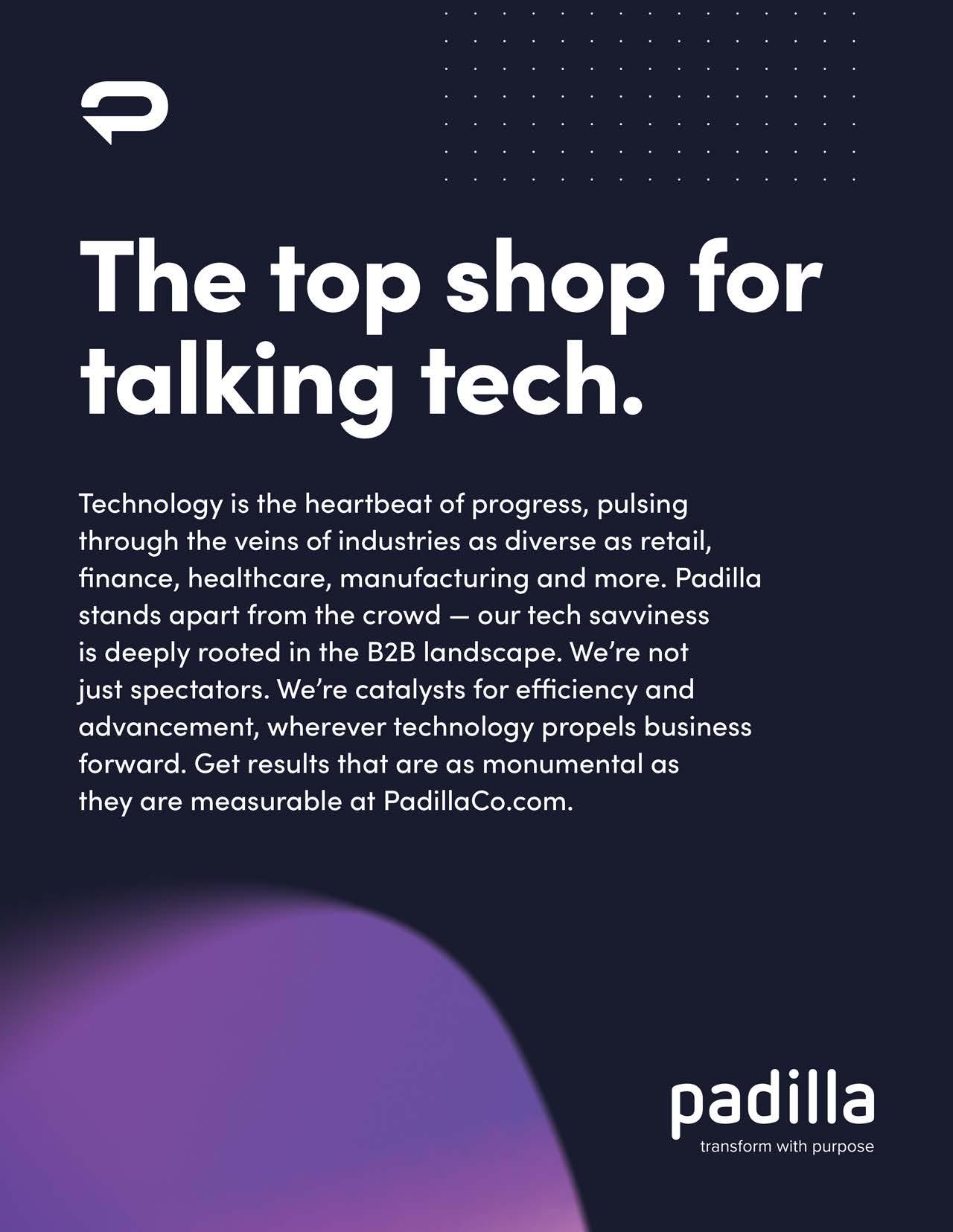
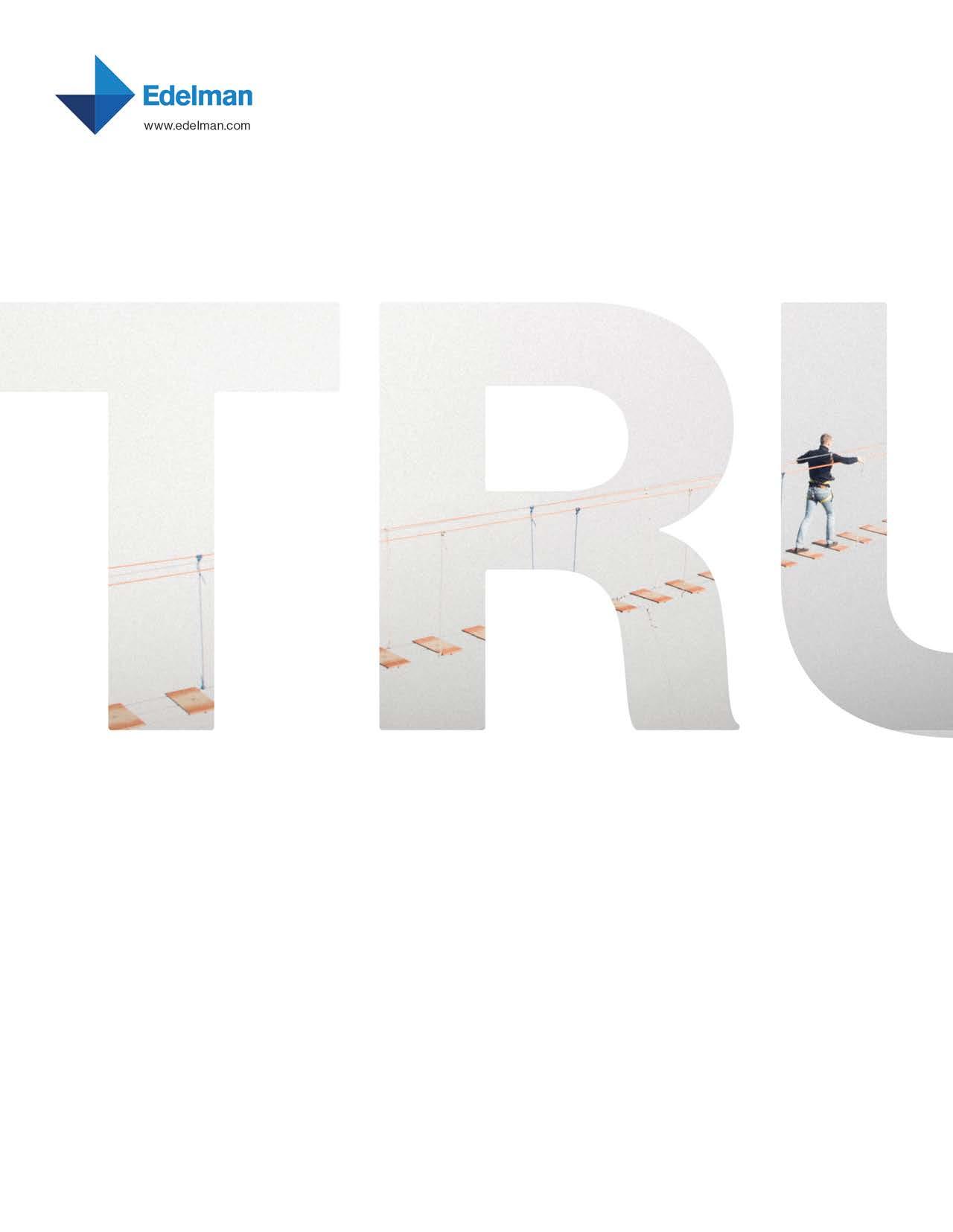
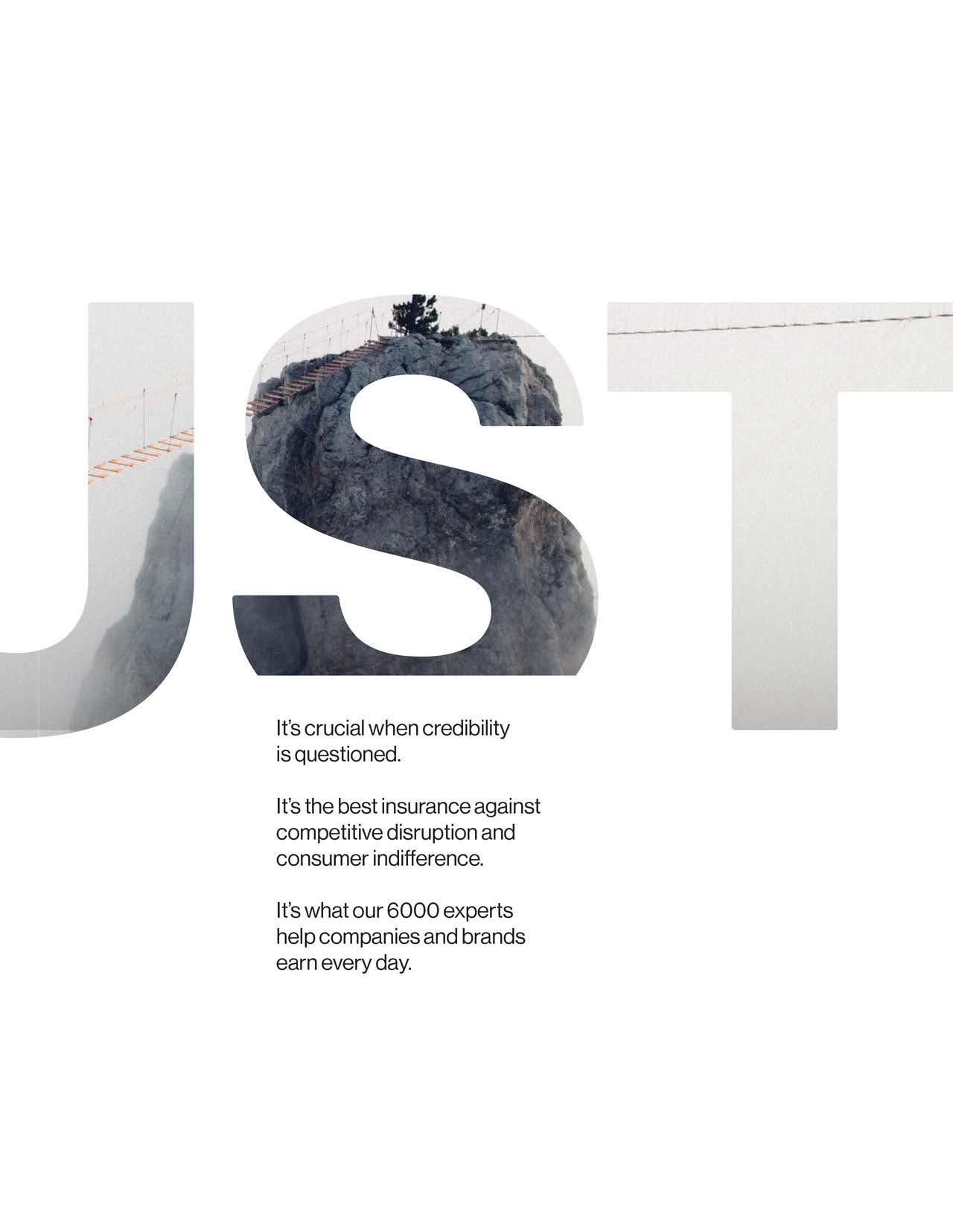

Artificial intelligence is reshaping PR’s business model and client experience. The future will belong to communications agencies that can use these tools to create new ways of working as well as provide greater value for clients.
Over the years, specialized software has transformed the public relations profession and added to the industry’s toolbox. In the early days of my PR career, the key to success was simple: the names and numbers you had on hand. Over the years, specialized software has added new “must-have” tools for success. The practice of public relations has evolved to include new services, like SEO, but the tools haven’t been differentiators because they’ve been widely available to anyone willing to pay.
The landscape is shifting. Artificial intelligence has become a disruptive force that is fundamentally reshaping how PR firms operate, deliver value and serve clients. The future now belongs to communications agencies that can build their own tools and build new ways of working.
In other words, technology is about to become a tremendous differentiator within the industry, and this has ramifications regarding how firms win business, serve our clients and manage talent. Yes, agencies will continue to thrive on strategic insight, domain expertise and genuine human connection. But many will offer product development to the mix.
Designing the tools
As they always have, clients judge us by our ability to execute a strategy that builds trust with the public and delivers results. The strategy will remain the same. The tactics will undoubtedly change. Artificial intelligence gives firms the power to design bespoke tools for specific client needs or new products that all of them can use. The mandate has evolved from being expert users of technology to becoming expert builders of it.
We’re putting this principle into practice at FINN Partners, where we’ve developed tools, technologies and proprietary platforms designed to put AI to work for our clients. Each offering is built to address real-world challenges with precision, speed and insight, always backed by the human expertise that turns intelligence into action.
This includes:
GEO: Brand visibility optimized for LLMs and new search behaviors, so your message gets found.
AIristotle: A proprietary agentic tool that analyzes narrative discourse to craft the most effective messages, whether to drive engagement or counter manipulation, depending on client needs.

SAIL: Secure, phased AI integration for marketing and communications, including audits, roadmaps, training and tailored deployments for each brand.
Forensic media analysis: An AI-augmented forensic approach to uncovering coordinated attacks, bad-faith actors and disruptive technologies that manipulate client narratives.
Canary for crisis: A proprietary AI-powered simulation that helps communications teams prepare for real-world pressure in today’s complex media environment.
As we invest in tools, we are also investing in training our people to use them. Our staff are equipped not only to operate the tools, but how to strategically use them to gain deeper insights. This fusion gives our clients faster, sharper and more informed counsel.
Redefining value: Think bigger, broader, deeper
We all know new tools and technology enable professionals to think faster and smarter. But the real opportunity is to go bigger, broader and deeper. As technology increasingly assumes more operational roles, early-career professionals fear it may replace them. The mindset should instead shift to how these new tools can accelerate the career growth of these individuals.
Technology allows a new generation of professionals to move beyond early career administrative work faster, enabling them to focus on strategy, creativity and client counsel much earlier in their careers. For agencies, it means what we are selling is changing. We’re no longer selling operational hours, but we’re unlocking a full team of strategists and creative problem solvers.
The result? Clients get more senior level thinking per dollar spent, and young professionals develop deeper expertise faster, building a pipeline of future leaders shaped by creativity, curiosity and strategic depth. Premium on human trust and authentic relationships
And yet, no matter how advanced the tools, PR will remain at its core, a relationship business. Trust and collaboration will remain the pillar upon which client relationships are built.
And whether we are dealing with clients, the media, or stakeholders, relationships require authenticity, real experiences and emotional intelligence. These are inherent-
By Alicia Young
ly human qualities that technology cannot replace. When a crisis hits, clients don’t turn to a tool; they turn to the person they trust.
To paraphrase Amy Poehler on SNL: AI can draft a press release, but it can’t build a genuine relationship with a reporter. It can track sentiment data, but it can’t navigate a nuanced crisis and provide empathetic counsel to a leadership team. It can track keywords, but it can’t craft a truly resonant story that lands with an audience.

The road ahead for public relations will not be defined by those who simply adopt technology, but by those who build, shape and integrate it into the very fabric of their counsel.
The opportunity lies in using these new capabilities to deliver greater value for clients and more meaningful growth for our teams. The challenge for today’s communications leaders is to guide this evolution, ensuring that technology serves strategy, not the other way around. If we rise to that challenge, we won’t just keep up with change, we’ll define what comes next.
Alicia Young is Founding Managing Partner at FINN Partners.
Brunswick Group handles Hologic as the women’s health diagnostic and medical imaging company is acquired by Blackstone and TPG in a deal valued at $18.3 billion.
The transaction is the largest all-cash MedTech takeover ever, and the biggest go-private healthcare deal since 2006. Abu Dhabi Investment Authority and GIC, which is Singapore’s sovereign wealth fund, will have minority investments in Hologic
“With their resources, expertise and commitment to women’s health, Blackstone and TPG will help accelerate our growth and enhance our ability to deliver critical medical technologies to customers and patients around the world,” said Hologic CEO Stephen MacMillan.
The aggregate purchase price represents a 46 percent premium on Hologic’s May 23 closing price, the last full trading day before media speculation about the takeover. The deal is expected to close during the first-half of next year.
Blackstone has $1.2 trillion in assets under management, while TPG manages $261 billion in assets.
Why selling your public relations firm to a strategic buyer not only delivers a monetary payoff but is also the clearest path to securing your legacy.
By Rick Gould
For most entrepreneurs, building a public relations or creative services firm isn’t just about growing a business—it’s a lifelong investment of time, passion and sweat equity. Founders pour themselves into every client pitch, every new hire and every late night spent refining strategies. Over the years, the firm becomes more than a company; it becomes a personal legacy. At some point, however, every owner faces the same question: What happens when I’m ready to step back? Succession planning is one of the most important and overlooked aspects of running a PR firm. It’s also one of the most difficult, because the decision is deeply personal. Owners must balance financial security, continuity for staff and clients and the desire to see their life’s work carried forward. While there are several common options, one in particular often delivers the greatest financial reward: selling the firm to a strategic or financial buyer.
The traditional succession paths
Grooming an internal successor. Passing the firm to a family member or long-time employee is the most traditional option. The advantage is cultural continuity and preservation of legacy. However, these transitions usually require years of preparation, financing arrangements and risk-sharing. The outgoing owner often relies on future profits or installments to get paid out—and if the firm stumbles, those payments may never fully materialize.
Partner buyouts or ESOP. Some firms pursue gradual ownership transfers through employee stock ownership plans or partner buy-ins. While this can keep the business ‘in the family,’ the financial upside is limited. The valuation tends to be conservative, and the seller’s payout is stretched over a long timeline, subject to firm performance.
Merger for continuity. Merging with another agency can provide stability for clients and staff, but these deals are usually structured around efficiency rather than maximizing owner value. The founding owner may retain a leadership role for a time, but the payout often pales in comparison to a straight sale.
Why selling delivers superior results
For owners seeking not just continuity but maximum monetary reward, selling the firm outright is often the most compelling succession strategy. Here’s why:
Valuation premiums. Strategic buyers— larger PR firms, marketing conglomerates or private equity-backed platforms—are willing to pay multiples of EBITDA because they see synergies and growth potential beyond what the founder can achieve independently. A sale valuation of 5-7x EBITDA, for example, far outstrips the conservative numbers used in internal transitions.
Liquidity and certainty. A sale puts money in the owner’s pocket today—usually a mix of upfront cash and performance-based earnouts. Compare that to waiting years for employee buyouts funded by profits. With a sale, the founder secures liquidity and reduces financial risk.
Growth capital for the firm. Buyers often bring resources, infrastructure and capital to accelerate growth. That means clients gain access to expanded services, synergies and opportunities, while the founder’s legacy can continue on a larger stage.
Timing the market. The PR and communications sector is attracting unprecedented buyer interest. Private equity firms are rolling up agencies into platforms, and strategic buyers are eager to expand into niches like fintech communications, healthcare PR and crisis management. Selling during a strong cycle allows founders to capitalize on this momentum—rather than waiting and risking a downturn.
Addressing common concerns about selling
Despite the advantages, many owners hesitate to sell. Common concerns include:
“Will my culture survive?” The best buyers understand that culture drives value. They often want the firm’s leadership and staff to stay, precisely because culture is what clients are buying.
“What about my employees?” A well-structured sale protects employees by integrating them into a larger platform with more resources and growth opportunities.
“Won’t I lose control?” Yes, selling means ceding control. But many deals allow founders to remain in leadership roles during a transition period, often with significant autonomy. The key is negotiating terms that align with the founder’s goals.
When is the right time to sell?
Timing is everything. The best time to consider a sale is:
When the firm is healthy and profitable.
• When client concentration is low and revenue is diversified.
• When strong growth trends make the firm attractive to buyers.
• When the broader M&A market is active.
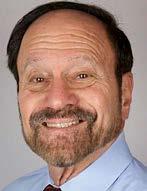
Waiting until retirement is imminent—or until the firm has lost momentum—usually leads to weaker valuations. Owners should start succession conversations early, ideally three to five years before they plan to exit, to maximize value and allow time for due diligence.
Steps for owners considering a sale
Assess your goals: Clarify what matters most—maximizing payout, protecting employees, preserving legacy, or all three.
Valuation: Understand what your firm is worth today and what could enhance its value.
Explore buyer types: Strategic acquirers, private equity firms and niche roll-ups each offer different benefits.
Engage an advisor: An experienced M&A advisor ensures you identify the right buyers, negotiate favorable terms and manage the process efficiently.
Plan your next chapter: Whether that’s retirement, a new venture, or a leadership role under the new ownership, think about life after the transaction.
Succession planning isn’t just about continuity. It’s about unlocking the financial value of decades of hard work. For most PR firm owners, selling the firm provides not only the highest monetary payoff but also the clearest path to securing their legacy. Internal transitions and gradual buyouts can work in certain situations, but they often limit upside and tie payouts to future uncertainty. In contrast, a well-structured sale delivers liquidity, certainty and the opportunity to see your firm thrive on a bigger stage.
At Gould+Partners, we specialize in representing sellers of PR and creative service firms. We help owners navigate succession options, identify the right buyers and negotiate deals that maximize both value and legacy. If you’d like to explore whether selling is the right path for your firm, let’s start a confidential conversation.
Rick Gould is Managing Partner of Gould+Partners, a merger and acquisition consultancy specializing in the PR sector.


Press releases are important, but they do little to create brand and market awareness, and they’re no substitute for a well-orchestrated PR strategy.
Growing numbers of tech companies are trying to recruit PR pros adept and skilled at building brand and increasing market awareness.
Some want PR pros to elevate their brand presence and execute strategic PR campaigns. Others want them to build a brand that inspires trust and stands out in a crowded market. Still others want PR pros who can develop compelling storylines and write bylines and op-eds.
However, grasping those marketing objectives and how to go about them is foreign to many PR pros, as they continue to pursue the conventional practice of only putting out random press releases.
Go to most any technology vendor’s website, click on newsroom or press releases, and that’s what you’ll find: just press releases and lots of them. Some announce quarterly earnings or executive hires, while still others announce new products touting features never seen in similar competitive products.
Press releases are important to technology vendors for several reasons. However, marketing isn’t one of them. As one Silicon Valley marketing executive so aptly put it, “Press releases don’t work for us.”
When potential customers check out those press releases, they shake their heads. They’re disappointed because they’re not finding more in-depth answers to their current or short-term issues and challenges. Basically, press releases leave customers wondering, “Is that all there is?”
Customers demand more
Today’s engineering and purchasing customers demand comprehensive technical and educational content on which to base their buying decisions. They want to know whether or not a technology supplier understands their problems. Is the vendor perceived to be a technology leader? Or does it just offer mediocre technology that’s available at other vendors or a re-hash of older technologies?
What about leadership? Are the executives well-known and respected in the industry? Do they know the industry and the technology? Are they credible? And how stable is that vendor’s leadership?
A recent IDG/Foundry research report focused on similar questions posed by Information Technology Decision Makers. It stated: “… fulfilling the potential behind any promising product starts with customer engagement. That means developing a deeper understanding of your customer at hand. In

this case, knowing how IT decision-makers learn about your product, what kind of content value they actively seek throughout the tech purchase process and how you can better influence the buying decision.”
Random press releases distributed periodically don’t answer those concerns.
Only a narrow avenue
In most cases, marketing and PR rely on press releases to give them the only narrow avenue to showcase technology and new products. They do so by piling on a press release and hyping the product, touting every new feature and function to the point the press release becomes a glorified data sheet.
Most tech trade press editors tolerate such content simply because it provides them news and details of industry technology advances. But with customers, it rings hollow, again with the question, “Is that all there is?”
Consequently, press releases and random press mentions do very little to build a technology company’s brand and market awareness or create industry thought leadership.
Conventional publicity practices might be okay for some consumer businesses. But in the technology world, it’s a considerably different story. With technology’s dynamic nature, a company’s marketing operations and strategic PR should be inextricably intertwined. That is a must to assure that the company’s technology and products are constantly at the top of customers’ minds.
The basic problem for many tech companies is following the traditional gap between sales and PR. As such, they’re worlds apart. Conventional PR does its thing, and marketing and sales rely on emails and phone calls to customers and potential customers.
Sustaining strong customer engagement
In these two instances, a well-thought-out strategic PR plan is required to capture and sustain strong customer engagement.
This means chief marketing officers, marketing vice presidents, sales executives and PR pros must change their mindsets. It involves re-thinking their conventional marketing and sales plans and digging deeper into how to implement a strategy that significantly advances customer engagement, elevates the company brand and builds greater market awareness.
The PR pro, in particular, needs to expand his or her plans beyond press releases and press mentions. They need to develop, embrace and execute a well-organized press strategy in collaboration with their marketing, sales and executive colleagues.
By Dan Garza
Thought leadership is one tech PR example that many companies are embracing to reach, maintain and sustain brand and market awareness. Case studies are another effective customer engagement PR program. Their effectiveness relies heavily on how and what you include in the content. Potential customers want to read about issues or problems others are having and what steps they took to resolve them. That’s the basis for a customer success story or case study.

Moreover, they want to know what actions another company took to reach a technology decision. Thus, a section in the case study allows you to explain—without hyperbole—specific features or functions of your technology that were instrumental in solving a customer’s problem or problems.
Thought leadership and case studies are powerful PR tools. But byline articles represent the linchpin for a strong PR strategy and can serve as the underpinnings for all PR initiatives. The main reason is a proactively developed byline article initiative carries strategic content that can be minimally rewritten and used for other strategy supporting PR assets, such as case studies, thought leadership, white papers, webinars, press briefings and others.
A byline article or op-ed initiative hands you a tacit, third-party endorsement simply because the industry trade press is highly credible and have massive audiences. Moreover, those byline pieces give your company credibility and customer trust, as well as an aura of technology leadership. Also, business press editors and market analysts search for byline articles and opeds to get technology updates and possible leads for their articles and presentations. Finally, with each published byline piece, your company’s reputation and industry authority increase.
By implementing these powerful strategic tools, PR pros can overcome the press release roadblock, collaborate with their marketing peers and help capture that elusive brand and market awareness for their companies.
Dan Garza is a marketing PR professional and veteran observer of Silicon Valley PR.
Avoq has added Megan Thomas, who spent 21 years in two stints at CNN, as VP in its reputation management practice.
Most recently, Thomas was Managing Editor for Entertainment at CNN covering the cultural scene.

She also served as a Producer for anchor Wolf Blitzer and earlier was a Senior Editor/ Producer covering global events, California’s economic/political developments, immigration, climate, tech and media stories.
Based in Los Angeles, Thomas will expand Avoq’s presence beyond its D.C. base. He’ll report to Andrea Hagelgans, co-Lead of the Reputation Management team.
Peter Duda, who was Weber Shandwick’s President of its Global Crisis and Issues Management practice, has joined H/Advisors Abernathy as its Crisis Chief.
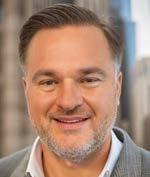
In his 30-year run at Weber, Duda handled investigations, litigation, regulatory matters, restructurings, labor relations, executive transitions and product liability issues.
Earlier in his career, Duda held posts at Intermedia Advertising, BSMG Worldwide and practice law in Chicago.
H/Advisors Abernathy is part of France’s Havas.
Mike Goodwin, who has more than 30 years of strategic communications and crisis experience, has joined Infinite professional services firm as a VP.
He has done PR stints at Stanton and
Makovsky & Co., where he handled legal, SEC regulatory enforcement and financial issues as well as conducting presentation training sessions.
Goodwin also worked in the corporate communications departments of Xerox, Pepsi Bottling Co., and International Paper, directly interacting with general counsels and business unit heads.
CStreet Advisory Group has hired Ben Schrag as Chief Strategy Officer to step up business development efforts and oversee its new optimization practice.

With more than two decades of professional services experience, Schrag joins C Street from Fried, Frank, Harris, Shriver & Jacobson, where he was COO of its restructuring group.
Earlier, he co-founded Prime Clerk with C Street President Michael Frishberg and served as Chief Growth Officer at Kroll. Schrag began his career as a restructuring associate at Kirkland & Ellis.
The optimization unit will help clients enhance performance with a focus on operational excellence. It will drive end-toend transformation from diagnostic analysis and strategic design to implementation, positioning each organization for sustained growth and success.

Ding strategic direction for the channel’s publicity, communications and creative services, including talent relations, awards, events and photo publicity.
Jill Kramer, who was most recently Chief Marketing and Communications Officer at Accenture, is taking on the same role at Mastercard, effective Dec. 1. She succeeds Raja Rajamannar, who will now serve as a Senior Fellow for the company.

At Accenture, Kramer led a global, integrated and tech-driven function driving brand relevance, market differentiation and business growth across industries and geographies. She previously led Accenture’s brand and advertising, leading all advertising strategies, creative development, production, media planning and buying.
Before coming to Accenture, Kramer was EVP Senior Director at BBDO and VP, Account Director at both DDB and Rodgers Townsend.
Ed Reilly plans to step down as Chairman/CEO of DGA Group during the first half of next year. He will take the non-executive Chairman post.

isney Entertainment has brought on Allison Rawlings to serve as Head of Publicity and Communications, a newly created role, for its FX streaming channel. Rawlings comes to FX after more than a decade at NBCUniversal, where she was most recently EVP, Communications, Television and Streaming. She previously served as Head of Public relations at Dreamworks Animation, Head of Communications at LA’s Geffen Playhouse and a Senior Account Supervisor at Cohn & Wolfe.
At FX, Rawlings will be tasked with guid-
As part of the transition, DGA has named Prem Kumar, who heads the Middle East & North Africa practice, President.
Reilly founded DGA in 2020 and was responsible for the acquisition of Albright Stonebridge Group and Interel Group. It has 300 staffers.

Earlier, the Marine Corps veteran served as global CEO of FTI Consulting’s strategic communications unit, founded Westhill Partners, and held the Vice Chairman post at BSMG Worldwide (now Weber Shandwick).
Kumar was on the National Security Council at the White House and State Department.


3 Park Ave., 19th Flr.
New York, NY 10016
212/999-5585
Fax: 646/328-1711
info@5wpr.com
www.5wpr.com
IG: @5wpr
Linkedin.com/company/5w-publicrelations
Facebook.com/5WPublicRelations
X: @5W_PR
TikTok: @5wpr_
Additional Office: Miami, FL
Matthew Caiola, CEO
Ronn Torossian, Founder & Chmn.
Lori Ruggiero, Managing Partner, EVP, Corporate & Technology
5W Public Relations (5WPR) is a top independently owned PR firm based in New York City. Since 2003, 5W Public Relations has partnered with public and private companies, tech organizations, and high-profile individuals to deliver strategic communications that drive real business results.
5WPR’s dedicated Technology PR and Technology Marketing Practice specializes in building integrated communications campaigns that combine thought leadership, brand storytelling, and digital media strategy, all tailored to the fast-evolving tech landscape. With deep industry expertise and strong relationships across top-tier media, 5W crafts compelling narratives that translate complex innovations into messages that resonate with investors, partners, and consumers alike.
Beyond Tech, 5WPR serves a broad range of industries, including Consumer Products, Food & Beverage, Beauty, Apparel & Accessories, Home, Travel & Hospitality, Technology, Entertainment & Sports, Nonprofit, Corporate and Crisis Communications, and Digital & Social Media. With 200+ professionals, the agency offers an integrated, results-driven approach across PR, digital, and branding, helping clients connect with their audiences and grow their bottom line.
5WPR’s notable industry clients include Blackbird.ai, PLAUD.AI, LiveRamp, and Skai, among many others. 5W was honored as one of Ragan’s Top Places to Work in Communications and recognized


360PR+ has led executive thought leadership and tech media storytelling for Hyundai-backed Motional, which is focused on harnessing the latest breakthroughs in AI to create a machine learning-first autonomous driving system that is safe, capable, and cost-efficient to scale across many cities.
on Digiday’s WorkLife Employer of the Year list. The agency’s campaigns have also earned top distinctions, including Consumer Product PR Campaign of the Year, Business-to-Business Campaign of the Year, and Travel & Tourism Campaign of the Year, among others.
60 Charlton Street New York, NY 10013 212/729-5833 www.360PR.plus
Mike Rush, Partner, mrush@360pr.plus
Stacey Clement, Senior Vice President, sclement@360pr.plus
Sheila Hughes, Vice President, shughes@360pr.plus
Laura Tomasetti, CEO, ltomasetti@360pr.plus
At 360PR+, consumer technology has been part of our DNA since the agency’s founding in 2001. We’ve helped advance both category leaders and challengers who bring innovation to our everyday lives and are powering the future. From smart home and digital entertainment, to adtech, edtech, automotive tech and more, some of our clients have included Anker, BlueParrott, Cedar Electronics (Cobra), Honeywell, Jabra, Motional, Nintendo, SimpliSafe, The Sharper Image, Trek e-bikes, XPeri and Zipcar.
Our team has earned its repu-

tation as a trusted go-to for influential tech journalists, reviewers, influencers and analysts. We’ve helped clients break through at CES, IFA, SXSW and other events, earn awards and take the stage at the most important forums, such as Fast Company’s Innovation Festival. Central to all of that is our ability to translate complex technologies to compelling narratives, with innovation storytelling and high-impact campaigns.
Recognized for creative excellence with a long list of award-winning, business-driving campaigns for our clients, 360PR+ is a PROI Worldwide partner, offering reach and expertise in 100+ cities globally.
1640 S. Pacific Coast Highway Redondo Beach, CA 90277 310/320-2010 hello@bobgoldpr.com www.bobgoldpr.com
Bob Gold, Founder & President Beth Braen, SVP
Bob Gold & Associates (BG&A), a nationally acclaimed, award-winning public relations and marketing agency, is celebrated for its data-driven, cutting-edge strategies that elevate brands in technology, media, and telecommunications (TMT). Since its founding in 1997, BG&A has be-
come synonymous with creativity and results, earning accolades for turning complex narratives into powerful, industry-leading stories. Founder Bob Gold, named PRSA-LA’s 2019 Communications Professional of the Year and a proud inductee as a Cable TV Pioneer, has built BG&A into one of the top 100 Elite PR Agencies in the U.S., according to PRNews which named us Best In The West by PRSA.
BG&A’s success lies in its ability to seamlessly blend traditional PR expertise with advanced AI and digital tools to meet the evolving demands of today’s media landscape. The agency specializes in strategic communications that resonate with audiences, leveraging its deep knowledge of the technology and telecom industries to create lasting impact. With offices in Los Angeles and New York City, and as co-founder of the WIN PR Group—a global network of hightech PR firms—BG&A offers global reach with a personalized touch.
At the heart of the agency’s approach is BG&A InsightTM, a proprietary methodology that uses data and analytics to craft bespoke strategies for clients. This commitment to intelligence-driven communication enables BG&A clients to thrive in an increasingly digital and AI-focused world.
Serving 15 locations, including: San Francisco, New York, Los Angeles, Washington, D.C., Chicago and Austin. 415/913-7528
results@bospar.com @BosparPR www.bospar.com vimeo.com/571954519
Chris Boehlke, Curtis Sparrer, Tom Carpenter, Principals
Denyse Dabrowski, SVP
Paula Bernier, Chief Content Officer
Bospar is the “Politely Pushy” PR and Marketing agency. For tech. For healthcare. For banking and fintech.
Person-per-person we are the most awarded agency in the United States.
Why?
Because we create innovative campaigns that cut through the

noise and drive the desired results.
From AI, data and cloud to hardware, IoT and mobile, from IaaS to SaaS and every -aaS in between, from Web3, gaming and open source to cybersecurity and verticals across HealthTech, FinTech, EdTech, HR Tech, PropTech and MarTech, Bospar is your full-stack agency.
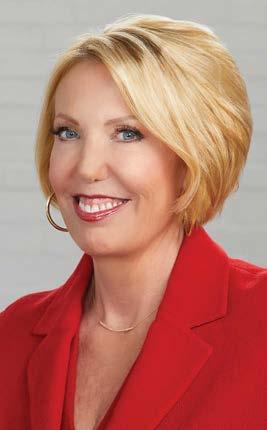
Laura Borgstede has more than 32 years executive management, branding and marketing communications experience working with business-to-business and business-to-consumer companies of all sizes. Laura started Calysto Communications as the first global public relations agency focused on mobile, wireless and telecom in February 1999. This has expanded to full marketing communications in AI, IOT, mobile, wireless, and telecom.

The AI and data landscape is expanding and shifting at an extraordinary pace and your PR partner should be deep diving into every corner of the conversation to find compelling angles that elevate your brand and differentiation.
Our expertise spans media relations, thought leadership, IR and analyst relations, social/digital media, influencer engagement, crisis management, and integrated marketing and messaging.
We work with seed-round startups, SMBs, unicorns valued at over a billion dollars, and publicly traded companies.
Any business building GenAI needs a PR partner who gets it. That’s why Bospar launched Push*E. Not a substitute for our humans, but “the first-ever PR counsel at scale,” said Josh Constine, venture partner at SignalFire and former editor-at-large at TechCrunch.
2533 Haberfield Ct. NE Atlanta, GA 30319 404/266-2060 ext. 10 laura.borgstede@calysto.com www.Calysto.com; X: @Calysto Linkedin.com/company/calystocommunications
Laura Borgstede, Chief Energizing Officer
Kristine Bennett, Chief Client Officer
Christine Barragan, Director of Operations
Calysto Communications™ is a global marketing communications and public relations agency that specializes in raising awareness, credibility and trust while driving value for companies in the AI, IoT, mobile, wireless and telecom markets. Calysto has a 26-year history of helping companies in the communications industry build buzz, brands and business results.
16 E 34th Street, 9th Floor New York, NY 10016 hello@codewordagency.com www.codewordagency.com www.linkedin.com/company codeword www.instagram.com codewordagency X.com/codewordagency bsky.app/profile/codewordagency. bsky.social
Kyle Monson, Founding Partner
Michael McKloskey, Managing Partner and EVP
Gabie Kur, Partner, Head of Growth
In the PR and communications landscape we’re in now, anyone who claims to have all the answers should probably be eyerolled right out of the room. But with over a decade of experience working with some of the biggest (and smallest) tech companies in the world, we know a thing or two about building real connections with audiences. It’s a momentum game.
No matter how you define success—whether it’s boosting a bottom line or launching a brand into the stratosphere—momentum is what’s going to get you there. And that’s our thing.
Brands rely on Codeword to build experiences that people actually care about. In 2025 alone, we wrote speeches that commanded the biggest tech stages, built online communities for expert developers, turned skeptical audiences into paying fans, and orchestrated product launches that were heard around the world.
We understand the immense pressure and unique challenges that come with being a major player in the tech space. That’s why global leaders like Google, ASUS, Qual-
Continued on page 30


Continued from page 29
comm, TechCrunch, Lowe’s, and Android trust Codeword to shape how they show up in the world. Learn more about what makes us tick at codewordagency.com.
5 Wood Hollow Road Parsippany, NJ 07054 973/588-2000 www.coynepr.com
501 7th Avenue New York, NY 10018 212/938-0166
Thomas F. Coyne, CEO Rich Lukis, President Joe Gargiulo, Executive Vice President Brian Murphy, Senior Vice President Christine Azzolino, Vice President
In an era defined by advances in artificial intelligence, connected living and immersive digital ex-

periences, technology continues to accelerate faster than ever. Each year redefines what is possible and how people connect with innovation.
At Coyne PR, we do more than keep pace with emerging technology. We help brands define it. Our integrated, channel-agnostic strategies translate complex innovations into compelling, human-centered stories that drive awareness, relevance and growth. Whether launching a category-defining product or guiding brands through technological transformation, we bridge the gap between invention and audience impact.
Coyne has represented many of the world’s most prominent and successful consumer technology brands, including AccuWeather, Casio, Engadget, Eureka, HARMAN, IMAX, KEF, littleBits, Midea, Reolink, Signify and VTech. From product launches and breakthrough campaigns to navigating industry challenges, our hands-on approach has consistently delivered success. We thrive on technology, making us an extension of our clients’ teams and helping them stay ahead in a rapidly evolving landscape.

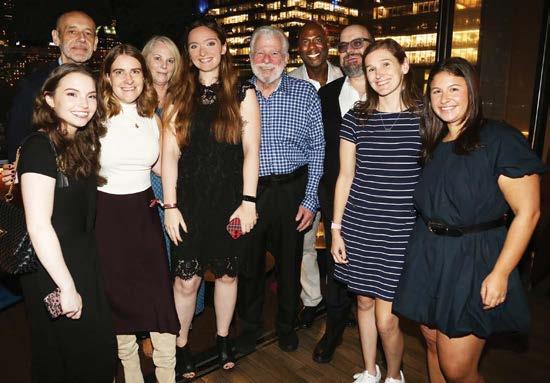
As the next wave of innovation unfolds, Coyne PR is committed to staying at the forefront of innovation, ready to help brands navigate the next generation of technological breakthroughs.
220 East 23rd Street, Suite 301 New York, NY 10010 646/370-1341 www.daddibrand.com cyodice@daddibrand.com Linkedin.com/company/dbc-brandcommunications
Bill Daddi, President & Founder Caroline Yodice, Executive Vice President Justin Finnegan, Senior Vice President Sara Serbanoiu, Vice President
DBC is the leading public relations and marketing services agency for companies, associations, and consultancies in the advertising, marketing and insights industries.
Utilizing our deep sector expertise, experience, and understanding, as well as leveraging our network of industry leaders, we help companies at all stages of development identify the most effective ways to go to market, engage targets, drive inbound leads, and shorten the conversion cycle in an increasingly complex and competitive landscape.
Our integrated reputation and consensus engineering methodology combines strategic positioning, trade and business press engagement, content, collateral, and thought leadership, GEO, industry visibility, and strategic partnership identification.
Our point of difference is our clarity of vision, innovative think-

ing, and proven track record of results. DBC’s client roster includes companies such as AdImpact, CIMM, Keen Decision Systems, LG Ad Solutions, the Media Rating Council, and Vevo, providing us with a unique vantage point on where the industry is heading and how to stay ahead of the curve.
211 E. 43rd Street, #1800 New York, NY 10017 hello@diffusionpr.com diffusionpr.com/us
Daljit Bhurji, CEO and CoFounder
Ivan Ristic, President and CoFounder
Kate Ryan, US Managing Director Ivana Farthing, UK Managing Dir.
Diffusion is an independent, global communications agency founded in 2008. We enable innovators to take on the status quo and transform the future faster. We help scaleups to master the new mainstream, challenger brands to grasp the mantle of leadership, and innovative incumbents to reinvent their legacy.
Diffusion offers creative public relations services to clients navigating today’s complex and transformative technology landscape, spanning enterprise and consumer technology, retail and business services. The Diffusion team is built of early adopters with a deep understanding of technology and how it applies to our everyday lives. We’ve partnered with companies including DJI, Pearl, CalypsoAI, alliantgroup, Artemis Technologies, Mobileye, Ghostery, Red Hat, SevenRooms and more to position their real-world applications
at the intersection of innovation and impact. We fight the relentless battle for market and mindshare in the crowded enterprise tech space, and our passion and expertise spans software, cloud computing, cybersecurity, AI, IT consulting and beyond to overcome barriers to progress, inspire movements that power growth and to defend hard-won advances by protecting reputation.
250 Hudson St., 16th Floor
New York, NY 10013
212/768-0550
Fax: 212/704-0117
www.edelman.com
Edelman is a global communications firm that partners with businesses and organizations to evolve, promote and protect their brands and reputations. Our 6,000 people in more than 60 offices deliver communications strategies that give our clients the confidence to lead and act with certainty, earning the trust of their stakeholders. Our honors include the Cannes Lions Grand Prix for PR; Advertising Age’s 2019 A-List; the Holmes Report’s 2018 Global Digital Agency of the Year; and, five times, Glassdoor’s Best Places to Work. Since our founding in 1952, we have remained an independent, family-run business. Edelman owns specialty companies Edelman Intelligence (research) and United Entertainment Group (entertainment, sports, lifestyle).


100 Park Avenue, Ste. 1623
New York, NY 10017
212/808-4900
info@feintuchpr.com
www.feintuchcommunications.com www.PRWorldAlliance.com
Henry Feintuch, President Doug Wright, Vice President
Tech PR is in our DNA and our senior, hands-on team is proud to have played a critical role in introducing technologies which continue to shape the market, as well as new, cutting-edge breakthroughs which will define tomorrow’s home and work environments.
Start-ups and rapidly growing brands turn to us for seasoned counsel and our large toolkit of tactics and experience to help build brand awareness, generate leads
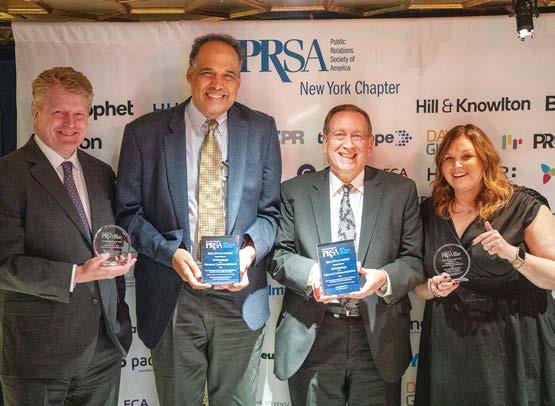
Feintuch Communications team scores four wins at 2025 PRSA-NY Big Apple awards gala for its “Sober Curious” movement campaign for NCSolutions. Pictured (l. to r.) are Tony Cheevers, Customer Success Officer, Researchscape Int’l.; Doug Wright, Vice President and Henry Feintuch, President, Feintuch Comms.; and Deirdre McFarland, Chief Marketing and Communications Officer, NCSolutions.
courtesy: Video Production & Motion Design, tbmotiondesign.com.
and/or assist in their fundraising efforts. As story tellers, marketers and client advocates, we know how to position, launch and breakthrough the clutter of today’s media marketplace.
Current tech clients include eflow Global (fintech), HDMI Licensing Administrator, Kramer (pro AV), NCSolutions (ad/marketing tech), Soliddd (healthtech) and SurgePays (fintech & telecom). We’re also well experienced in enterprise and SaaS software solutions, cleantech, consumer electronics, AI, robotics and more.
Preparing to launch a green technology to help fight global warming? Or introduce a new enterprise platform? Looking to gain industry analyst coverage or determine how to tell shareholders why a security technology, biotech development, retail tech enhancement or fintech algorithm may change the world? Let’s talk!
1675 Broadway New York, NY 10019 212/715-1600 www.finnpartners.com
Adrienne McGarr, Mng. Partner, NY/East Coast, Adrienne.Mcgarr@ finnpartners.com
Casy Jones, Mng. Partner, Supply Chain, Casy.Jones@finnpartners. com
Karli Barokas, Mng. Partner, Seattle, karli.barokas@ finnpartners.com
Margaret Hoerster, Mng. Partner, Chicago/Midwest, Margaret. Hoerster@finnpartners.com
Jeff Seedman, Mng. Partner, San Francisco/West Coast, Jeff. Seedman@finnpartners.com
Flora Haslam, Mng. Partner, London/Europe, Flora.Haslam@ finnpartners.com
James Brasher, Mng. Partner, Singapore/Asia Pacific, James. Brasher@finnpartners.com
FINN is a global, independent
and full-service communications and marketing agency. We help clients navigate business complexity, crafting tailored solutions that are strategic, integrated and designed for business impact.
We are experts at translating the business and operational impact of technology, from AI, machine learning and cybersecurity, to mobility, transportation, supply chain and sustainability. Our team exposes the real-world implications of your technology, and showcases the genius and passion of the people and teams who bring them to market.
1800 E. Lambert Rd., Suite 106 Brea, CA 92821
888/317-4687 www.firecrackerpr.com info@firecrackerpr.com
Edward M. Yang, Founder and Managing Partner
Firecracker PR helps you get known, period. Our proven 5-step process—“Ignites”—has helped companies rapidly scale their awareness from Day 1. Industries include technology, consumer electronics, education, healthcare and more.
Companies we have worked with include Fujitsu, SRI International, Boeing, HP, Microsoft, D-Link, TP-LINK, Shield AI, Overland AI, Ecobat, Li-Cycle, Beyond Limits, and many others.
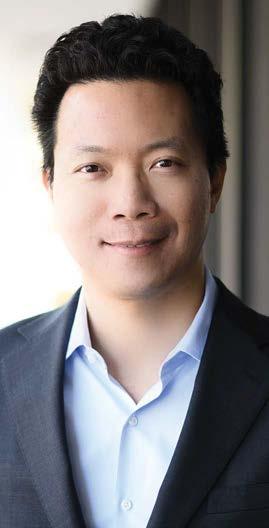


112 East Hargett St. Raleigh, NC 27601
919/832-6300
www.fwv-us.com
Rick French, Chairman & CEO
David Gwyn, President / Principal
Natalie Best, Chief Operating Officer / Principal
French/West/Vaughan (FWV) is the Southeast’s leading public relations, public affairs, advertising and digital media agency, a distinction it has held since 2001. FWV has received 40 Global or National Agency of the Year honors over the past 28 years, including being named the nation’s Best PR Agency of 2024 by a jury of the country’s top journalists. Its professional services practice area is ranked 14th in the country.
FWV has developed countless PR campaigns and communications strategies to help brands and innovative start-ups stand out in a complex marketplace. From using data to insert clients into conversations about AI, cybersecurity, fintech innovation and digital transformation, to creating media events that demonstrate their expertise or developing clear messaging around complex regulatory shifts and product launches, our work is often the foundation on which category leadership is built.
FWV’s tech PR experience includes work done on behalf of 3Flow, A4 Health Systems, ABB, Airwayz, AutoFi, Dunn Solutions Group, Eaton, Epsilon Advanced Materials, Foresight Corporation, Freedom Solar Power, Hercules Electric Mobility, Kalyani, Lear Corporation, Lenovo, LG Energy Solutions, Lumos, MDeverywhere, Natrx, Neopatents, Net Virta, Reflexion, Saft, SAS, SunCom, Time Warner Cable and Wolfspeed. In addition to these more traditional tech brands, the agency also has experience with sports-tech clients such as CapTech and Skytrak, as well as entertainment/lifestyle tech clients including Fliptix and ReverbNation.
In addition to its diverse range of healthcare and medical marketing clients, FWV’s passionate team of expert storytellers works with many of the world’s leading companies and brands, including Wrangler, ABB, Proximo, Melitta, Teen Cancer America and the N.C. Department of Transportation, just to name a few. FWV is the parent company of fashion and lifestyle

PR firm AMP3 (New York City), pet and animal health practice Fetching PR; and Prix Productions, a feature film and documentary production company. FWV employs more than 140 public relations, public affairs, social media, advertising, digital marketing and content creation professionals across its five offices nationwide.
746 The Alameda, Suite 20 San Jose, CA 95126
408/286-2611
Fax: 408/286-0133
lhoffman@hoffman.com www.hoffman.com
Lou Hoffman, CEO
Caroline Hsu, Global Technology Officer
Gerard LaFond, Managing Director, North America
Kymra Knuth, Chief Client Officer, North America
Steve Jursa, EVP, North America
Jenny Fieldgate, Managing Director, Europe
Lydia Lau, CFO / EVP of Global Operations
Defining communications broadly to include digital, content marketing, thought leadership as well as traditional PR, The Hoffman Agency knows how to differentiate brands and deliver air cover for sales. With its heritage in the technology sector, the firm specializes in multi-market programs which leverage content and thinking across geographies. While campaigns vary by client and industry, all share one theme: the creation of content that reflects the tenets of storytelling. This means developing narratives (www.storytelling-techniques.com) that prompt journalists to write and target audiences to read—a far cry from the “corporate speak” that satisfies internal stakeholders. Toward this end, the firm conducts storytelling workshops for internal communicators, executives, and employees.
685 Third Ave. New York, NY 10017
646/277-1200
Bo.Park@icrinc.com www.icrinc.com
Bo Park, Managing Partner & Global Head of ICR Technology
Katie Creaser, Partner
John Kreuzer, Partner
Matt Lindberg, Partner
Brittany Bevacqua, Managing Partner
Dan Brennan, Managing Director
Fay Li, Managing Director Nirav Suchak, West Coast GM, Technology
ICR Technology brings equal parts business acumen, technology expertise, capital markets perspective and media savvy to clients spanning all business stages— from startups seeking to increase market share or raise additional capital, growth companies with an IPO or acquisition on the horizon, organizations investing in M&A, businesses in the throes of digital transformation, and public companies seeking to elevate their brands build long-term value. Comprised of former Wall Street analysts working alongside seasoned PR experts, ICR offers a unique combination of sector experience, media and industry relationships and creativity that helps technology companies generate the types of stories that both capture mind share and grow market share.
The firm’s Technology practice is one of its largest sector groups, representing organizations across AI, Cybersecurity, Enterprise Software, Information Technology, Digital Payments & Ecommerce, Fintech, Martech & Adtech, Data & Analytics, EV & eVTOL and Quantum Computing. Embracing a roll-up your sleeves approach from senior members to associates, the team delivers results across media, content, social, event speaking, awards and more. ICR maintains offices in New York, Connecticut, Boston, Baltimore, San Jose and Beijing.
Clients: BeyondTrust, Darktrace, Fortinet, HARMAN, Keysight, Mobileye, Sailpoint, ServiceTitan, Waystar, Qualys, and QuantumScape.
1299 East 4500 South Salt Lake City, UT 84117 www.ingearpr.com
Peter Schuyler, President & Managing Partner
Angela Snell, Head of Broadband and Streaming
Chris Lesieutre, Founding Partner & CFO
Caryn Cohen, Founding Partner
InGear is a full-service content and communications agency specializing in technology markets including professional AV, broadband, consumer electronics, and emerging sectors. With more than 20 years of industry expertise, InGear partners with brands to develop strategic, story-driven communications that inspire engagement
and deliver measurable impact. Services include media relations, content development, marketing strategy, and brand consulting— connecting leadership vision with audience relevance. InGear blends creative execution with business insight to help clients clarify their message, amplify their presence, and achieve sustainable growth across global and vertical markets.
2717 South Lamar Blvd., #1087 Austin, TX 78704
3459 Ringsby Ct. #306 Denver, CO 80216 www.ink-co.com hey@ink-co.com
Starr Million Baker, CEO + CoFounder
Kari Hernandez, CSO + CoFounder
Blair Poloskey, Principal + Partner
Candice Eng, SVP, Comms., Tech Practice Lead
Caitlin New, VP, Comms., Energy Practice Lead
INK Communications Co. is a leading B2B tech and energy PR agency, recognized by Inc., Forbes, PRovoke, PR Daily, Ragan, and PRNews as one of the best PR agencies in the U.S. For more than 20 years, we’ve helped highgrowth companies stand out with integrated programs that elevate brand stories, grow awareness, and build industry authority.
Our services include media relations, analyst relations, thought leadership, corporate communications, content marketing, digital and social strategy, brand strategy, SEO, creative design, and web services. Beyond traditional channels, INK also tracks how clients appear in AI-powered search, layering in GEO/AEO (generative and answer engine optimization) strategies to improve AI visibility and keep brands ahead in a rapidly evolving digital landscape.
What sets INK apart is Be There Before®, our trademarked methodology for proactivity. Built on INK’s proven systems across three key pillars—partnership, integrated communications, and analysis—this framework fosters lasting client relationships, connects communications across channels, and drives measurable business impacts. INK’s monthly BTB reports analyzing energy and B2B tech media trends bring this to life, delivering timely, actionable insights. INK is proudly female-founded

and led, with headquarters in Austin, TX, an office in Denver, CO, and remote team members nationwide.
110 Sutter St, 9th Floor San Francisco, CA 94104 781/966-4100
marketing@inkhouse.com www.inkhouse.com/ Instagram: @inkhousepr Linkedin.com/company/inkhousemedia---marketing X: @InkhousePR
Jason Morris, Chief Executive Officer
Alison Morra, Chief Operating Officer
Ed Harrison, Managing Director
Kate Riley, Managing Director Dan O’Mahony, Managing Director
Inkhouse is a strategic communications agency that helps the world’s most innovative companies drive relevance and impact. Founded in 2007, Inkhouse has built its reputation one client at a time, making it a sought-after agency for pre- and post-IPO technology innovators and Fortune 500 companies. The agency has deep expertise across various industries, including artificial intelligence, climate tech and energy, cloud infrastructure and applications, consumer, cybersecurity, education, finance, healthcare and wellness, and venture capital. It has over 140 people in seven major cities, with a national footprint of remote talent. Now part of Orchestra, the first company built for the future of communications, Inkhouse brings unmatched credibility and perspec-

tive to AI storytelling. Learn more at www.inkhouse.com.
601 Fourth Street, Suite 204 San Francisco, CA 94107 info@karbocom.com www.karbocom.com
Julie Karbo, Founder & CEO
Karbo is a top-rated integrated Tech PR, content, and digital marketing agency dedicated to powering rapid results and lasting impact for technology companies. From emerging startups to billion dollar brands, Karbo’s senior-led teams have contributed to the success of some of the world’s most innovative companies, including Apple, Hootsuite, Nutanix, Juniper
Networks, Nvidia, Oracle, Rocket Lawyer, AppDynamics, Nerdwallet, Snowflake, GoDaddy, Digg, Penguin Solutions, Intel, Georgiamune and Equinix.
Karbo’s Rapid Results Method is driven by data analytics and delivers unmatched visibility, credibility, authority and measurable ROI. With Karbo Com, you don’t get bench players. You get the industry’s top marketing and PR teams working with you every day, whether it’s delivering sales, elevating brand identity, AI search results, scoring top tier media recognition, attracting funding and staffing, deploying content marketing strategies, driving traffic, building communities, or strengthening partnerships. This relentless drive for speed and tangible outcomes allows us to turn high-stakes business pressure into growth opportunities.
The Karbo team has pioneered tech PR, content and digital marketing efforts across categories and industries, such as AI/machine learning, cloud/SaaS, data/analytics, High Performance Computing (HPC), security, infrastructure, the IIoT/IoT, social communities, consumer apps, semiconductor, data center, and virtual and augmented reality. Our teams are experts in virtually every vertical market, including fintech, healthcare, greentech, e-commerce, CRM, Web3/ crypto, ed tech, smart cars and cities, energy, supply chain/logistics, legal, telecom, manufacturing, pharma, government, HR, retail, gaming and more.
When it’s make or break, you want the best. You want a team that’s seen it all, yet knows the latest and greatest trends, tech-
nologies, and tools. At Karbo, we have a track record of delivering revenues, industry-leading stature, partners, employees, and funding.
45 W. Jefferson St. Phoenix, AZ 85003
602/443-0030
info@kiterocket.com www.kiterocket.com
Locations: Phoenix, Seattle and California
Amanda Foley, Senior Vice President & Partner
Martijn Pierik, Senior Vice President & Partner
Jamie Campbell, Vice President, Client Services
Amy Smith, Vice President, Technology
Patrick McGuire, Strategic Advisor
Jessica Fishman, Director, Renewable Energy
Danielle Friedman, Director of Operations
We shape the global semiconductor story. Those aren’t just bold words. We have the credentials to back it up. For two decades, Kiterocket has led the way in semiconductor PR and marketing, combining unmatched industry knowledge, networking connections, and compelling communication campaigns that drive our clients and the industry forward.
With offices in Phoenix, Seattle, and California combined with a growing remote team across the U.S., the agency’s integrated services span brand strategy, media and influencer relations, digital marketing, social media, events, editorial, design, and content pro-
Continued on page 34
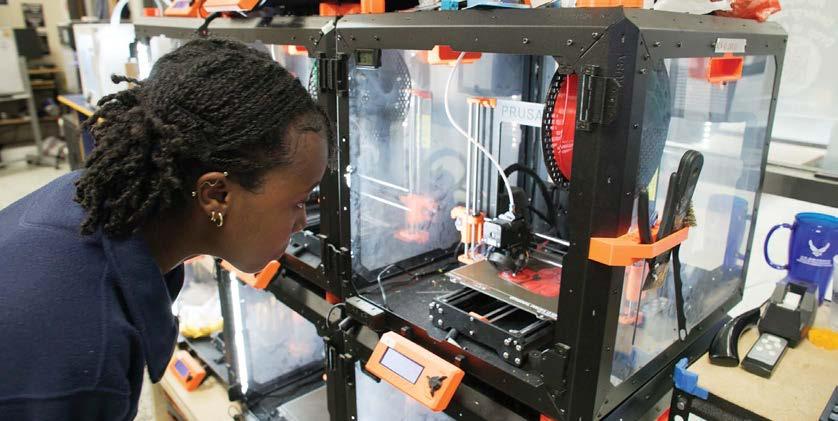

Continued from page 33
duction. www.kiterocket.com.
Clients Include: SEMI, Renesas, OmniVision, DuPont Technologies, ACM Research, Empower Semiconductor, LoRa Alliance, NexTracker, Everspin Technologies, and Veeco.
333 Bush Street San Francisco, CA 94104 415/370-7811 squad@launchsquad.com www.launchsquad.com
Brett Weiner, Partner (San Francisco)
Mike Schroeder, SVP, New Business & Frontier Tech (New York)
Amy Arthur, SVP, Finance & Ops. (Boston)
Lisa Picasso, SVP, Consumer (Chicago)
Jen Holmes, SVP, B2B (Boston)
Matt Calderone, SVP, Climate (New York)
Maeghan Ouimet, SVP, Editorial (Boston)
LaunchSquad is a storytelling and communications agency for bold, ambitious companies building the future. We’re a team of 115+ strategists, writers, and creatives based in New York, San Francisco, Boston, and Chicago, with people working flexibly across more than 20 states and three continents.
For 25 years, we’ve helped companies raise billions, go public, and reach multi-billion-dollar exits. We’ve helped unknown up-

starts break out and supported established brands as they reinvent and grow.
We build momentum through smart, holistic storytelling across earned, owned, and paid. We get the right stories in front of the right people. Our work spans both consumer and B2B brands in climate, AI, healthcare, transportation, tech, media, finance, and more.
Clients include: OpenAI, Chomps, Apptronik, Prelude Ventures, Atlassian, iHeartMedia, Netflix, On Running, Precision Neuroscience, and Uber.
98 N Washington St., Suite 410 Boston, MA 02114 978/499-9250 info@matternow.com www.matternow.com
Scott Signore, CEO & Principal Mandy Mladenoff, President
Your Vision Deserves Results. At Matter, we believe every idea deserves to be expressed with clarity, creativity and impact. Through award-winning PR supported by high impact marketing and creative, we partner with brands to spark meaningful connections and drive measurable results.
Falls Church, VA 703/716-3181
info@messnermediagroup.com www.messnermediagroup.com Linkedin.com/company/messnermedia-group X.com/MessnerMedia
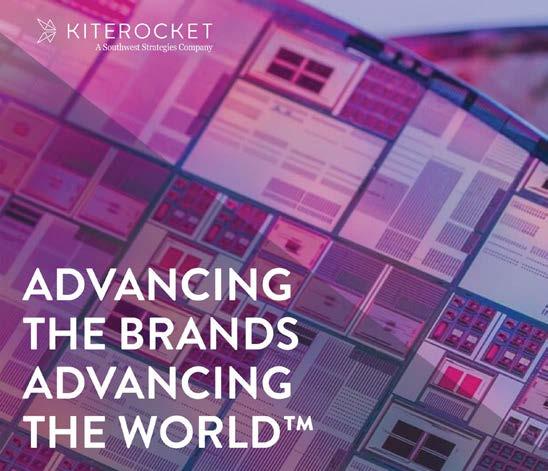
Kristina Messner, Founde & CEO Danielle Kastner, Sr. Account Executive
Messner Media Group (MMG) is a woman-owned strategic communications agency helping technology innovators in aerospace, defense, and healthcare rise above the noise and lead in their markets. Founded by award-winning strategist Kristina Messner, MMG combines deep communications expertise with decades of experience in media relations, storytelling, brand strategy, content development, and event marketing to deliver measurable impact for complex, mission-driven organizations.
Our integrated capabilities include public relations, marketing communications, digital and social engagement, content (AV, digital, and live event), and event production. For more than two decades, MMG has helped clients maximize ROI from major tradeshows— from EAA Oshkosh to CES and beyond—securing awards recognition, generating high-impact media coverage, and driving meaningful audience engagement. We’ve helped first-time exhibitors break through against larger brands and supported global leaders in shaping storylines that elevate visibility, strengthen brand connection, and inspire the next-generation workforce.
MMG also partners with investment firms and growth-stage companies to enhance market positioning, build brand equity, and prepare organizations for strategic growth. From AI, cloud, and cybersecurity to human–machine interaction, UAVs, sustainability, atmospheric science, and quantum research, MMG transforms innovation into influence—and visibility into value.
685 Third Avenue 27th Floor
New York, NY 10017
646/437-7602 www.montiethco.com
Montieth M. Illingworth, CEO & Global Managing Partner
Perry Goldman, Global Senior Director
Katarina M. Garner, Global Senior Director,
Cameron Penny, Global Senior Director, UK/EMEA
Joyce Lee, APAC Account Director/Hong Kong
Montieth & Company is a global specialist communications consultancy that provides a comprehen-

Kristina Messner, Founder and CEO of Messner Media Group, drives visibility for innovators shaping the future of technology, defense, and aerospace.
sive set of marketing communications services and solutions that seamlessly integrate and optimize the impact of earned, owned, and paid media through AI-powered solutions. M&Co’s flexible, integrated, and budget-efficient cross-border business model enables us to reach into over 25 media markets via our global hubs in New York, London, and Hong Kong, and our affiliates around the globe.
Our clients include companies for whom advancing innovation by harnessing the power and impact of emerging technologies is central to achieving sustained growth across markets. We serve clients across professional services, industrials, real estate, renewable energy, and a wide range of financial and technology-driven sectors, including asset management, fintech, blockchain, and AI; while also advising on investment research, data and risk analytics, compliance, security, law, and corporate shareholder services.
M&Co enables clients to assess and strengthen brand visibility in generative AI environments, including large language models (LLMs), as audience discovery shifts beyond traditional search. Our AI-powered solution measures and ranks brand profile, the effectiveness of all content, evaluates customer and client sentiment and engagement. We also provide early detection of reputational risk through AI-powered narrative monitoring of legacy and social media.


We empower clients to achieve influence through strategic engagement with the media, to establish their expert voice, and solve their most critical communication problems. Central to our value-add is supporting key client corporate initiatives. These range from expanding profitable market share by moving into new markets globally, to seeking private equity investments, and making strategic acquisitions.
1101 West River Parkway Suite 400 (Headquarters) Minneapolis, MN 55415 612/455-1700 PadillaCo.com
Amy Fisher, Senior Vice President
Danielle Engholm, Senior Vice President
At Padilla, we help technology brands stand out, earn trust and inspire action. With decades of B2B tech experience, we don’t shy away from complexity; we thrive on it. From intricate products to multifaceted sales models, we uncover human stories and business insights that make even the most technical topics resonate.
Whether you’re entering new markets, launching new offerings, or evolving into a solutions-focused company, we’ll craft and activate messaging that motivates your audiences to take action. Our integrated, data-driven campaigns are grounded in market intelligence to help you connect, convert and create measurable impact.
Padilla’s B2B marketing and communications expertise spans multiple industries, helping tech brands in food, agriculture, finance, health, retail, sustainability, industrial, logistics and transportation. We work with companies of all sizes, including powerhouse brands like Assent, Belden, C.H. Robinson, Crisp, Ditch Witch, Graco, Rockwell Automation, SullivanCotter, Wabash and Wesco.
Padilla is a full-service agency that transforms brands and organizations through strategically creative communications. Our work across a range of industry sectors is consistently recognized by the PRWeek Awards, PRovoke IN2 SABRE Awards and PRSA Anvil Awards, among others. Padilla operates in seven cities in the U.S. through its family of brands, which includes SHIFT (performance communications), FoodMinds (food and nutrition affairs) and Joe Smith (brand strategy). As an AVENIR GLOBAL company and
a founding member of the Worldcom Public Relations Group, the agency provides services to clients through 115 offices worldwide. Transform with purpose at PadillaCo.com.
125 High St., 2nd Floor Boston, MA 02110 617/502-4300 info@pancomm.com www.pancommunications.com LinkedIn.com/company/pancommunications
Philip A. Nardone, President & CEO
Mark Nardone, Chief Marketing Officer
Elizabeth Famiglietti, Chief People and Culture Officer
Darlene Doyle, Chief Client Officer
Megan Kessler, Chief of Integrated Marketing & Strategy
Gary Torpey, Chief Financial Officer
Mendy Werne, Managing Director, PANBlast
Catherine Coffey, Managing Dir., UK
PAN is the brand-to-demand agency that empowers possibility for B2B tech and healthcare companies worldwide. Forged from PR, we are storytellers at heart with deep industry experience and a strategic, data-driven mindset. We move ideas across media, people to action, campaigns to results, and brands to the next stage of their journey. Our special sauce is a mix of dedicated senior leaders, creative makers, everyday superstars, and analytical minds that turn data intelligence into key insights. In practical terms, that means uncovering and deploying breakthrough tech, like AI/automation, to maximize the value of client investments. We don’t just work harder; we work smarter.
After 30 years in business, we are specialists in the art of telling brand stories, and experts in the science of marketing and driving demand. Recognized as a 2x Tech Agency of the Year, Data-Driven Agency of the Year, and (most recently) Outstanding Tech Agency of the Year, we thrive at the forefront of disruption and help global brands navigate their most critical transformational moments.
Today, PAN supports the full lifecycle of a brand, from Series A rounds to IPOs and beyond. Wherever you are in your journey, PAN is here to help you grow.
Clients Include: Algolia, Amdocs, Aurora Solar, BitDefender, Certera, Cornerstone, DISCO, eClinical, Extreme Networks, Genpact, iCIMS, Locus Robotics,
Mimecast, Mission Cloud, ObjectFirst, PAR Technology, Solera, Thales, The Predictive Index, Toshiba/Americas, UPS Capital and Vertex.
Headquartered in Boston, MA 75 State Street, Suite 100 Boston, MA 02109 617/624-3200 hello@racepointglobal.com www.racepointglobal.com
Larry Weber, Founder & Chairman
Bill Davies, CEO
Phil Chadwick, Chief Financial Officer
Ben Haber, Executive Vice President, Client Services
Allison DeLeo, Senior Vice President, Client Services
Jen Filleti, Senior Vice President, Client Services
Stacey Forman, Senior Vice President, Agency Operations
Racepoint Global is an earnedfirst creative agency built on the belief that technology has the power to transform industries and change lives. From embedded tech and semiconductors to SaaS and generative AI, we thrive at the intersection of innovation and storytelling. For more than two decades, we have partnered with entrepreneurs and global leaders alike to craft breakthrough narratives, build credibility with media and influencers, and deliver measurable impact.
Founded by communications pioneer Larry Weber, Racepoint carries forward a relentless focus on amplifying innovation through storytelling. We specialize in translating complex and technical stories into narratives that resonate, building credibility with media and analysts, elevating executives as thought leaders, and creating integrated campaigns that drive influence and measurable business impact. With a refreshed brand, expanded leadership, and award-winning work, Racepoint continues to set the standard for tech-forward, earned-first communications.
425 E 53rd Street
New York, NY, 10022
212/593-6400
Fax: 212/593-6397
info@ruderfinn.com
RuderFinn.com
LinkedIn, Instagram, TikTok and Facebook
Kathy Bloomgarden, Chief Executive Officer
Peggy Walsh, Chief Operating Officer
Michael Schubert, Chief Innovation Officer
Ian Glover, Chief Financial Officer
Tejas Totade, Chief Technology
Officer and Head of RF TechLab
Emilie Hayhoe, SVP, Technology and Innovation
Jaclyn Weisberg, SVP, Technology and Innovation
Antonia Caamano, SVP, Technology and Innovation
Brianna Rabe, SVP, Technology and Innovation
Ruder Finn’s Technology and Innovation practice is defining what’s next for the world’s most dynamic technology brands. From global enterprises to category-defining startups, we partner with companies across every stage of their journey—crafting bold narratives, shaping influence, and driving behavior change.
Harnessing the power of AI and data-driven intelligence, we humanize the technology conversation to:
• Deliver hyper-targeted communication strategies that connect leaders, influencers, and key opinion leaders (KOLs) with audiences where they are most engaged
• Shape the conversation on the future of innovation—from the infrastructure that powers AI to the breakthroughs it enables
• Create movements that inspire belief, adoption, and advocacy
Our work crosses the entire technology value chain, connecting brands with audiences across earned, paid, and social channels— igniting engagement that drives measurable impact.
153 W. 27th St., Suite 505 New York, NY 10001 352/246-5532 www.sourcecodecommunications. com
Greg Mondshein, Co-Founder and Managing Partner
Rebecca Honeyman, Co-Founder and Managing Partner
Kristen Stippich, Managing Director, US
Giles Peddy, Managing Director, UK
Kevin Dulaney, EVP, Head of Innovation and Integrated Marketing
Christa Conte, EVP, Head of Client Services
Tim Scarfe, SVP and West Coast Lead
Ruvina Uppal, Director, UK
Katie McGovern, Vice President,
Continued on page 36


Continued from page 35
AdTech & MarTech
Cori Cagide, Vice President, Consumer Meghan Matheny, Vice President, Enterprise
SourceCode is an award-winning, international integrated communications and marketing agency helping brands changing the world grow. We’re bringing brains and hustle, humanity and technology, creativity and business intelligence back to public relations and marketing. When it comes to AI, staying ahead of the curve isn’t just a goal; it’s a necessity. We believe that we can harness AI to enhance our work and bring more value to our clients. As PR professionals, embracing AI doesn’t mean replacing the human touch that is invaluable to our work. Instead, it’s about augmenting our capabilities and making our strategies more impactful. As AI continues to evolve, it brings a host of advantages that we can’t ignore. SourceCode is now offering services where we integrate AI into our PR services that can offload more than just operational efficiencies across teams but also implement strategic thinking and creative execution to ensure you’re meeting business goals and being a leader in the industry. For more information, please visit www.sourcecodecommunications.com or reach out to hello@sourcecodecomms.com.
548 Market St., Suite #44541 San Francisco, CA 94105
650/888-1850 www.sparkpr.com

Donna Burke, Co-Founder, donna. burke@sparkpr.com
Chris Hempel, Co-Founder, chris. hempel@sparkpr.com
Cameron McPherson, Chief Operating Officer, cameron. mcpherson@sparkpr.com
For over 25 years, Spark Public Relations has been a trusted PR and Marketing partner to startups, enterprises, and visionary leaders who have transformed industries and created new technology categories. From navigating the rise of smartphones and apps to redefining how consumers interact with fintech and blockchain platforms, and leading the charge in AI, Spark has been at the forefront of technological revolutions shaping our world. In addition to traditional PR and marketing, Spark harnesses the power of social media to amplify stories and drive meaningful engagement across digital platforms, connecting clients with their audiences in dynamic ways.
In today’s increasingly connected and complex world, Spark thrives by telling dynamic stories that drive change. Our team of over 50 professionals is passionate about creating and sharing the narratives of fast-growing, industry-defining companies. By partnering with some of the world’s top innovators, we explain how their groundbreaking work is transforming the future. Sparkpr’s expertise spans a wide range of industries including Adtech, AI (Artificial Intelligence), AR/VR (Augmented & Virtual Reality), Blockchain, Clean Energy Tech, Cloud, Consumer Apps, Consumer Electronics, Consumer Tech, CRM, Crypto Cybersecurity, Data & Analytics, Digital Payments & Ecommerce, Ed Tech, E-commerce, Enterprise Software, EV & eVTOL, Fintech, Food Tech, Gaming, Green Tech, Health Tech, High Performance Computing (HPC), HR, IIoT/IoT, Infrastructure, Machine Learning, Manufacturing, Martech, Mobile, Pharma, SaaS, Security, Semiconductor, Smart Cars, Smart Cities, Smart Homes, Social Communities, Supply Chain/Logistics, Sustainability, Telecom, Transportation & Mobility Tech, and more.
With teams based in San Francisco and New York, as well as key U.S. hubs like Austin, Boston, Los Angeles, San Diego, along with international locations, Spark combines flexibility with collaboration to drive results. Consistently recognized by Forbes, INC., and Newsweek as one of America’s Best PR Agencies, Spark is the partner of choice for technology companies—from disruptive startups to

Fortune 1,000 leaders—that are reshaping industries and the world.
Chrysler Building 405 Lexington Ave., Floor 8 New York, NY 10174 inquiries@theswayeffect.com www.theswayeffect.com/
Jennifer Risi, Founder & President
The Sway Effect is an award-winning global network of independent marketing and communications agencies focused on driving reputation while putting diversity, inclusion, and equity at the center of everything they do. In 2019, The Sway Effect’s Founder Jennifer Risi set out to change how the industry works by establishing a new kind of model –one that breaks down barriers and assembles the best and brightest talent in the industry to answer a brand’s challenge. Most recently, the agency was named PRNews Women Owned Agency of the Year for 2025. Our team has deep PR expertise and specializes in corporate communications, global media relations, investor relations and issues management. Notably, within the technology space, our team supports Appian and Collibra.
The agency has been awarded the below and more:
• PRNews 2023 Women Owned Agency of the Year.
• PRovoke Media 2024 North American Boutique Agency of the Year.
• PRovoke Media 2024 North American Capital Markets Campaign of the Year.
• PRovoke Media 2024 North American Diamond Award Winner – Superior Achievement in Reputation Management.
• PRNews 2024 Agency Elite Top 100.
• PRovoke Media 2025 80 Top
Agencies in the U.S.
• PRDaily’s Top Agencies 2024 and 2025.
• PRNews Agency Elite Top 120 in 2025 and 2026.
• PRNews 2025 Women Owned Agency of the Year.
129 South Street Boston, MA 02111 617/918-7060
209 W. Jackson Blvd. Chicago, IL 60606 708/421-0083 www.wearetierone.com
Marian Hughes, Co-Founder, Managing Partner, Chicago Kathy Wilson, Co-Founder, Managing Partner, Boston
Tier One Partners is an award-winning integrated marketing agency. We offer a comprehensive range of PR, content, and digital marketing services to propel B2B and B2C companies in AI and other disruptive technologies, digital healthcare, financial services and fintech, and energy tech into category leadership.
Recognizing that modern organizations require marketing partners that offer a variety of services, we’ve strategically built our agency around complementary practice areas. This integrated approach ensures all aspects of a client’s marketing strategy work in harmony, positioning us as a valuable, longterm partner for brands seeking sector leadership.
Our Communications services help elevate and protect brand awareness and include earned media, executive thought leadership, corporate and product launches, customer success programs, industry analyst relations, media training, crisis communications, and more.

Our Content Studio serves as a one-stop shop for content and digital marketing needs. Our talented team comprises copywriters, editors, digital marketers, and graphic and UX/UI designers who collaborate to help clients think and act like powerhouse publishers.
Our differentiator is keeping our clients one step ahead. Our Agile Insights & Analytics practice uses proprietary AI-driven methodologies and advanced listening tools to predict emerging business and cultural trends. Armed with these insights, we help clients cut through noise, connect dots, and share meaningful viewpoints through strategic media relations, thought leadership, and marketing campaigns that resonate with target audiences.
Co-headquartered in Boston and Chicago, Tier One is a certified women-owned business. We’ve successfully built awareness and category leadership for technology leaders including Altair, 24M Technologies, the Digital Data Design Institute at Harvard, iProov, Aware, Modulate, Reveleer, Collibra, UKG, Everbridge, Prophix Software, Centrilogic, and many others.
1042 Northside Drive, Suite 960 Atlanta, GA 30318
404/964-4862
www.trevelino/keller
Dean Trevelino, Co-CEO dtrevelino@trevelinokeller.com
Genna Keller, Co-CEO gkeller@trevelinokeller.com
Trevelino/Keller’s technology focus has always been differentiated by its commitment to emerging, challenger and middle market brands which it serves from an
integrated agency model—PR + Growth Marketing + Creative. Its technology segment is defined by Pure-Tech [SaaS, AI, Telecom, Telematics, Logistics, Applications, Cybersecurity, Cloud Computing, Networking] and Vertical-Tech [HealthIT, Fin-Tech, Clean-Tech, Food-Tech, Ed-Tech, Fashion-Tech].
Sought after for Brand Launches/ Refreshes, Go To Market and Accelerated Growth Strategies, the agency’s approach is appealing to technology companies with unknown or less know brands with a rapid trajectory eager to leverage its “Attribution Funnel” strategy built on a 3Gen Model—DemandGen, ReputationGen and LeadGen, integrating attribution into a content and paid marketing programming.
Recognized for having the industry’s best retention, Trevelino/ Keller acknowledges its 2 vs 64 success rate, with 64 being the number of staff it would have lost in 22 years to the 8–12% annual agency to agency attrition vs the 2 staff members it has lost to other agencies since 2003. It credits its staff retention with an executive management team with average tenure of 18 years, coupled with an extended management team averaging 12 years.
268 Bush Street #4203 San Francisco, CA 94104 team@upraisepr.com upraisepr.com
Tim Johnson, President
Victoria Guimarin, Vice President
Katie Jewett, Vice President

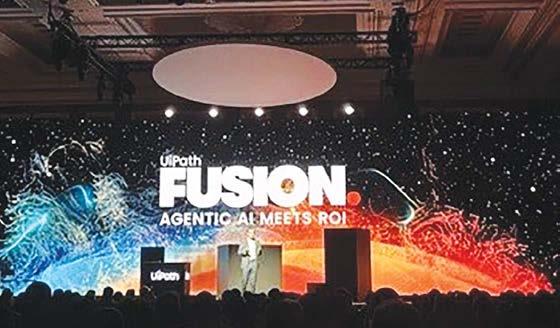
UiPath held its annual user event, FUSION, in Vegas Sept. 29-Oct. 2. V2 managed onsite media from Forbes, Diginomica, and Automation Today, delivering feature stories on the company’s growth, product vision, and customer success.
UPRAISE Marketing + Public Relations, an rbb Communications company, is a full-service, integrated communications agency with a reputation for delivering exceptional results through a combination of innovative strategy, creative execution, and deep industry expertise. With a focus on accelerating growth for B2B technology companies, UPRAISE leverages imaginative communication strategies, aggressive media and analyst relations, and inventive content development to build client visibility and leadership profiles.
The agency’s team, known for being “Smart, Savvy, Scrappy,” includes leaders with an average of 12+ years of experience, and a senior strategy team boasting more than 60 years in the field, offering unparalleled expertise. UPRAISE serves a wide range of clients, from early-stage startups to established Fortune 500 companies, with a concentration on B2B tech and financial services.
As the marketing partner for Plug and Play, the world’s largest accelerator and incubator, UPRAISE has played a pivotal role in launching hundreds of companies and products, many of which are now household names. Through relentless execution and strategic insights, UPRAISE helps innovators make their mark.
500 Harrison Ave., Suite 401R
Boston, MA 02118
617/426-2222
Info@v2comms.com www.v2comms.com
LinkedIn: @v2comms
X: @v2comms

Jean Serra, CEO and
Founder
Katelyn Holbrook
,
Chief Client Officer
Jen Plimpton, COO
Kristen Leathers, EVP, B2B Tech Lead
Shannon Murphy, EVP, Healthcare Lead
Melissa Mahoney, EVP, Crisis, Corporate Comms. and Climate Tech Lead
V2 Communications is an integrated communications firm specializing in B2B technology. Partnering with disruptive startups and established market leaders alike, V2 devises and executes communications programs for organizations that are transforming business, industries and society through advanced technologies, from vertical and agentic AI to enterprise SaaS, data infrastructure and cloud computing.
V2’s integrated model connects paid, owned and earned strategies into cohesive programs that reach the right audiences through the right channels. Leveraging its AIfirst communications framework, V2 optimizes every program for GEO crawling and AI discoverability, ensuring brands are surfaced, cited and trusted in the moments that matter most.
This modern approach makes V2 the trusted partner for highgrowth, high-authority brands such as AlphaSense, Cloudera, Datadog, Jasper, OneTrust, Rocket Software and UiPath. Over the past year, V2 has repositioned UiPath as a leader in agentic AI, elevated AlphaSense through high-profile awards and media coverage, and led integrated communications for Cloudera’s flagship event, EVOLVE, securing top-tier media attendance from Forbes, VentureBeat, and SiliconANGLE.


By Fraser P. Seitel
The O’Dwyer’s publishing colossus knows no geographical bounds. Loyal readers regularly criticize us from every corner of the globe.
Most recently, faithful O’Dwyer’s reader Richard Evans, writing from New Zealand, took a certain columnist to task for an early April piece labeling Commerce

Fraser P. Seitel has been a communications consultant, author and teacher for more than 30 years. He is the author of the Prentice-Hall text, The Practice of Public Relations.
Secretary Howard Lutnick and Treasury Secretary Scott Bessent as little more than cheerleaders for a run amok President, the “Dumb and Dumber of the Trump Administration.”
“Dear Mr. Seitel,” the viciously understated Mr. Evans began, “Oh my, this didn’t age well.” Mr. Evans’ email went on to point out in gruesome detail that, contrary to the column’s thesis, both Cabinet officials had proven themselves effective in advancing the Trump economic agenda in key areas from trade policy to foreign investment in the U.S. to broad corporate support for the President’s policies. Mr. Evans concluded his velvet vilification by asking simply, “Will you apologize to your readers for getting it so wrong?”
Yes, Mr. Evans. Damn your eyes! I apologize. You are right. I was waaaay off in both cases.
Billionaire Lutnick has toned down his initial brashness to become Trump’s prime mover in moving companies from Asia, Europe and the Middle East to agree to create multi-billion-dollar U.S. facilities. Meanwhile, billionaire Bessent has shed his initial timidity to become Trump’s go-to economic fixer and spokesman.
Bessent, in fact, has become the administration’s number one public relations weapon toward keeping the economic dialogue on a steady, credible and positive course; serving as a counterweight to the President’s propensity to pontificate and polarize.
Here’s how the Treasury Secretary does it. Bessent leads with facts
Donald Trump is known for many things, but “facts” are not one of them. It is indisputable that the President is prone to, ahem, occasional overstatement, exaggeration or
downright untruths in some of his public pronouncements. He’s a politician, after all.
But not Scott Bessent.
Bessent is a bona fide economic historian who taught economic history classes for five years at Yale. He speaks not as an economist—or yes, a cheerleader—but as a historian.
As discussion of a stock market “bubble,” caused by runaway AI spending, spread last week, Bessent cited history to shut it down. In the ’90s, he told CNBC, there were similar concerns about the Internet that ultimately led to substantial productivity increases and a reinvigorated economy.
“We’re starting to see that now from AI,” Bessent said, and he predicted that we would likely begin to see productivity gains from AI by the second quarter of next year.
The Treasury Secretary’s history lesson helped burst the discussion of an imminent bubble.
Bessent doesn’t sugarcoat
Early on in his tenure, Bessent was tentative, hesitant in answering straightforward questions and jarringly uncomfortable in interview situations. What a difference six months makes.
Today, in his own reserved and proper way, he is brutally blunt. A week ago, when Trump roiled markets by threatening to “massively increase” tariffs on China, it was Bessent again who quickly cleaned up the mess.
He reassured interviewers that we were still engaged in trade talks with China, and that the two leaders liked each other and would soon meet. But he blamed the current contretemps on a “low-level, slightly unhinged China trade person,” who was trying to create a false narrative and disrupt
relations. Bessent went so far as to name— by name—the troublesome Chinese trade official, an unprecedented diplomatic nono.
The Treasury Secretary’s frankness helped lead to a market rebound, a good example that …
Bessent is a market whisperer
After nearly a year back in office, Donald Trump is no longer a mystery to corporate America, Wall Street or Silicon Valley. Investors have learned to expect the unexpected.
Trump is mercurial, unpredictable, capable of sending the markets skyrocketing with one Truth Social announcement and plunging with the next.
It is left to Treasury Secretary Bessent, who led George Soros’ dominant currency trading initiatives and then excelled as a hedge fund manager, to correct and clarify his boss’ comments to help keep the American economy on a steady course. From the impact of trade tariffs to the independence of the Federal Reserve to the possibility of increased job losses, it has become Bessent’s responsibility to reassure the markets and the nation that all is well.
Typically, last week, Bessent countered the growing concerns about AI replacing massive amounts of American workers by again citing history and logic.
“We’re probably in the third inning of AI development,” he told an interviewer. This, he said, would inevitably lead to a boom in corporate capital expenditures. “What always follows a capex boom is an employment boom. When you see this level of capex, there will be plenty of jobs.”
His words were positive and reassuring; quite a contrast to the novice government official who, a scant six months ago, was being taken to task for his timidity.
When you’re wrong, you’re wrong.
Journalists rely on PR pros for their reporting, but have grown leery about the quality of the PR content they receive, according to a Global Results Communications survey.
When respondents were asked if they rely on information from PR pros, 81 percent said yes. In addition, 35 percent noted that PR inbound content is “vital” or “very important” to their work.
Another marker of PR’s value to journalists: Only 21 percent of the journalists surveyed said their use of PR had dropped over the past year. 69 percent said their reliance on PR had stayed the same, and eight percent said their reliance had gone up. Those users cited tighter deadlines and newsroom staff cuts as major reasons for the increase.
But there’s a fly in the ointment, and its name is AI. The phrase “read like a bot wrote it” was a common complaint sounded by respondents about pitches, and that is linked to a decreased level of trust.
Overall, just 12 percent had a positive view of AI being used to craft press releases and pitches, with 38 percent calling themselves “neutral” on the topic and 44 percent saying they viewed it negatively. When it comes to the general quality of PR content, respondents were not so bullish, either. Less than half (47 percent) judged it to be “good.” Journalists who rated PR content as “poor” basically did so for one of two reasons—either it was “too salesy” (30 percent) or showed a “lack of subject knowledge” (nine percent).


BGR Government Affairs has picked up Denmark’s Orsted for strategic counsel and advocacy on issues regarding offshore wind development.
Orsted is developing a $6.2 billion 65-turbine project off the coast of Rhode Island that is 80 percent complete.
The Interior Department in August issued a stop-work order on the Revolution Wind development due to national security grounds.
Orsted sued, and a federal judge in September ruled that construction of Revolution Wind, which will provide power to 350,000 homes in RI and Connecticut, can continue.
Revolution Wind had undergone extensive federal review prior to receiving approval in 2023 before anti-wind Donald Trump took office once again.
BGR Principal Steven Pfrang, former Chief of Staff to Republican Congressman Darin LaHood, and Nick Iarossi, Trump 47 fundraiser and National Finance Committee co-Chair of the DeSantis for President campaign, represent Orsted.
Tesla has hired Trump-connected Continental Strategy for D.C. representation.
Elon Musk’s company shelled out $560,000 for federal lobbying during the first half of this year on issues related to auto technology, AI, robotics, battery storage, EV charging infrastructure and autonomous vehicle policies.
Tesla made news on Oct. 7 by announcing plans to sell cheaper versions of its Model 3 and Model Y cars. They will sell for about $5,000 less than current models to help offset the loss of a $7,500 federal tax credit that was killed by Donald Trump and Republicans in Congress.
Continental founder Carlos Trujillo served in the first Trump administration as Ambassador to the Organization of American States. He also was a Trump campaign surrogate in outreach to Latino voters during the 2024 presidential campaign.
Continental’s Tesla team includes Partners Alex Garcia, who was Deputy Political Director for the Trump campaign; Tim Costa, Chief of Staff for Republican Congressman Dan Meuser; and VP Paul Calkins, ex-Lobbyist for the International Franchise Assn.
FGS Global represents CrowdStrike, the fast-growing cybersecurity firm, for issues related to AI and regulatory matters.
The Austin-based firm, which recorded a 21 percent jump to $2.3 billion in six-month revenues, acquired Pangea on Sept. 16 to extend its Falcon platform to deliver what CrowdStrike calls the industry’s first complete AI detection and response system. It will secure data, models, agents, identities, infrastructure and interactions from enterprise AI development through workforce usage.
CrowdStrike also last month unveiled a partnership with Salesforce. Its Falcon platform will be available within the Salesforce Security Center and on the Salesforce AppExchange.
CrowdStrike’s NASDAQ-listed stock has enjoyed a strong run this year, up 47 percent to $502 per share.
FGS has Washington Partners Gina Foote, who was Chief of Staff to Texas Republican Congressman Ted Poe; and Mike Iger, COS to New York Democrat Carolyn Maloney; working the CrowdStrike business.
KKR owns FGS.


Novo Nordisk has hired Greg Miley, Senior VP-Government Affairs at AbbVie, as Head of Corporate Affairs as the Danish pharmaceutical giant faces pressure from the Trump administration on drug pricing.
He spent 11 years in two stints at Chicago-based AbbVie. Miley also worked as interim Head of Corporate Affairs and Media Relations at Sanofi in Paris, Head of Public Affairs at Abbott, and Director of Worldwide Communications at Pfizer.
Earlier in his career, Miley was a U.S. PA Director at Burson-Marsteller, and Media Assistant for the City of New York.

Miley, who will join the maker of Ozempic diabetes/weight-loss drug next month, sees “a great potential to strengthen our global communication and public affairs efforts, reinforcing our commitment to innovation and the patients who benefit from it,” according to his post on LinkedIn.
Miley also looks forward to relocating to Denmark.
Novo CEO Mike Doustdar has launched a restructuring drive, which includes cutting 9,000 jobs.
Boston’s Benchmark Strategies has hired Ryan McGeown-Conron as Director of Public Affairs.
He will focus on clients in the life sciences, medtech, technology, AI and cybersecurity sectors.
McGeown-Conron joins Benchmark from the Massachusetts Department of Public Health, where he was Director of Legislative Affairs.
In that post, he led outreach for the DPH Steward Healthcare Incident Command, COVID-19 pandemic response, and vaccine rollout. Earlier, he served as Legislative Aide to Massachusetts House Judiciary Chair Michael Day.
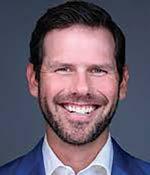
Prior to launching Benchmark, Bench was VP-Public Affairs at Rasky Baerlein Strategic Communications, and he held economic development posts in the administrations of Bay State governors Mitt Romney and Deval Patrick.
His firm has worked with clients such as FinanceBoston, Microsoft, Gloucester Fresh Seafood, AXON and ReWild Renewables.
San Diego’s Show Faith by Works is spreading pro-Israel messaging to Christian groups in the western U.S. on behalf of the country’s Ministry of Foreign Affairs.
Focused on California, Nevada, Arizona and Colorado, the mission calls for combatting “low American Evangelical Christian approval of the nation of Israel,” and to “counter new and evolving pro-Palestinian messaging as the global narrative shifts,” according to SFbW’s presentation.”
The group will dispatch teams of people and a “mobile museum” to Christian colleges, events and mega-churches to increase positive associations with Israel, while “linking the Palestinian population with extremist factions.”
Messaging will “highlight Israel’s significant links to Jesus and our faith” and “educate Christians that Palestinians shelter terrorists, built the tunnels for Hamas, hide weapons in their schools and hospitals and joined in the attacks on October 7.”
There also will be a push to encourage Christians to visit Israel.
SFbW, which has received $325,000 from Havas Media for the effort, does not have a formal contract with the Ministry of Foreign Affairs.
KNP Communications has lined up a contract to provide media training to members of Canada’s U.S. embassy.
The firm will impart advanced strategic communications wisdom to a half-day group session of up to 10 Canadians.
According to its agreement, KNP will focus on skills, including: “understanding what moves and sticks with audiences, segmenting U.S. media audiences (elite/mass media, national/regional/local, red/blue, news/niche); understanding aggregators and social amplifiers; navigating cultural and domestic political norms and sensitivities; crafting and pitching stories for a wide range of media outlets; and managing crisis communications.”
The firm also will review crisis communications challenges faced by the Embassy.
Founding Partner Matthew Kohut will provide the training. He has prepared CEOs, elected officials, entrepreneurs, ambassadors,
Lobbying News
scientists and authors for events ranging from television appearances to board meetings to TED talks. He’s the author of “Speaking Out: The New Rules of Business Leadership Communication” (2024).
KNP also is the home of Chasten Buttigieg, who is married to former U.S. Transportation Secretary Pete Buttigieg.
Bridges Partners is running an influencer campaign on behalf of Israel to promote the cultural interchange between it and the U.S.
It has received a $200,000 advance payment for the effort that is budgeted at $900,000 for recruitment, concept development, production and post-campaign reporting, according to its Justice Dept. filing.
Called the “Esther Project,” the influencer outreach is for the Ministry of Foreign Affairs and run through Havas Media Group’s Germany office.
Prime Minister Benjamin Netanyahu during his September trip to New York stressed the importance of the government’s social media outreach to bolster Israel’s flagging public support in the U.S.
“We have to fight with the weapons that apply to the battlefields in which we engage, and the most important ones are on social media,” he said during a meeting with pro-Israel influencers at the country’s consulate in NYC.
Bridges Partners, which incorporated in Delaware in June, is owned by Israeli consultants Yair Levi and Uri Steinberg.
Miami’s Newlink Group has acquired Italy’s EJ to strengthen its position in southern Europe, where it has offices in Madrid and Barcelona.
Founded by Massimo Costa, Milan-based EJ will be revamped as Newlink Italy. He will chair Newlink Italy and be supported by Jack Blanga, VP-Executive Creative Director; Carla Giammillaro, General Manager; and Francesco Bacchelli, Client Service Director.
Sergio Roitberg founded Newlink more than 25 years ago. The firm now has more than 500 staffers in eight offices, which include Mexico City, Santo Domingo, Buenos Aires and Lima.
It has represented Cisco, Swatch, Longines, Diaego, Citibank, Qatar Airways, Uber, Novartis, AeroMexico and Unicef.
Below is a list of select companies that have registered with the Secretary of the Senate, Office of Public Records, and the Clerk of the House of Representatives, Legislative Resource Center, Washington, D.C., in order to comply with the Lobbying Disclosure Act of 1995. For a complete list of filings, visit www.senate.gov.
535 Group, LLC, Washington, D.C., registered Oct. 21, 2025 for Capstone Research Corporation, Huntsville, Ala., regarding funding the policies to support integrated air and missile defense initiatives in relevant national security legislation, including defense appropriations and National Defense Authorization Act.
Akin Gump Strauss Hauer & Feld, Washington, D.C., registered Oct. 8, 2025 for Cinema United, Washington, D.C., regarding issues related to tax credits.
Integer, LLC, Washington, D.C., registered Oct. 15, 2025 for Private Investor Coalition, Washington, D.C., concerning tax issues affecting single family offices.
Kelley Drye & Warren LLP, Washington, D.C., registered Oct. 6, 2025 for Larson Leather Company, Bedford, Texas, concerning advocacy relating to reciprocal tariffs.
Summit Public Affairs, Murfreesboro, Tenn., registered Oct. 14, 2025 for Starbucks Corporation, Seattle, Wash., regarding issues pertaining to the One Big Beautiful Bill Act, issues related to trade, and economic development initiatives.
Williams & Jensen, PLLC, Washington, D.C., registered Oct. 14, 2025 for American Property Casualty Insurance Association, Washington, D.C., regarding issues related to third party litigation reform.

